Diving & ROV specialists
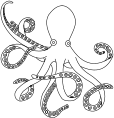



This website's purpose and terms of use are
delineated in the "About Us" section in the
navigation bar at the top of each page.
Click on this octopus icon to view its structure.

Publications CCO Ltd
and
Diving & ROV specialists

Scientific publications

Videos and animations

Procedures, historical diving,
and other technical documents
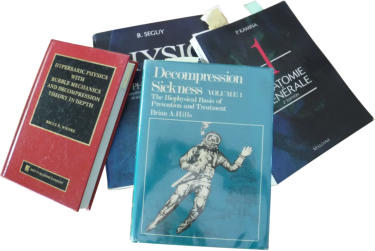
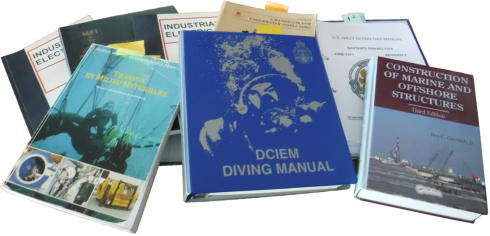

Equipment to take into consideration


Help us to make this website better
This website is the result of the combined efforts of scientists,
document writers, engineers, divers, and client representatives. It
stands as an independent platform committed to providing accurate
and honest information, free of any external influences from pressure
groups. However, maintaining this level of quality requires a significant
time investment. As such, any support towards improving this project
would be greatly appreciated.
The following hyperlink permits contributions to be made via
"Librapay.com", a platform for donation crowd-funding.
As our principal office is in Thailand, the currency of reference for
donations is the Thai Baht. It should be noted that 1 USD equals
approximately 36-40 THB. .

Click on the
octopus to return to
the top of the page

Food for thought

Cultural activities
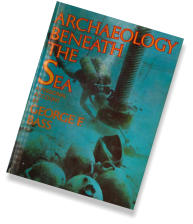
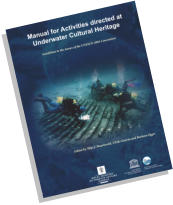
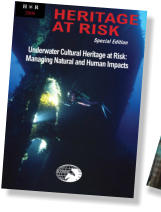

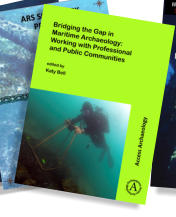
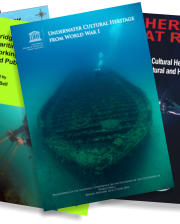
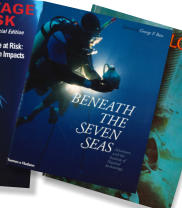
You can also help us by contributing articles or information.
You do not need to be a recognized scientist or engineer (although their
contributions are always welcome) and provide papers of the level of
those in the "Documents" section: Small, well-balanced posts in which
you tell us your thoughts on particular topics can be accepted and
published in the "Food for Thought" section, provided they are based on
proven facts and in accordance with our terms of use, displayed in the
"About Us" section (see in the navigation bar).
If you do not feel like a writer but have a recognized technical level, you
can join the team as an advisor and helper.
Best regards.
Christian Cadieux - Website manager.

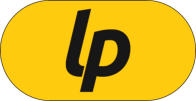
Moreover, it is possible to initiate transfers to a designated account via
SWIFT (with code SICOTHBK) or through traditional bank transfers.
For further information on the bank account particulars, kindly refer to
the "About us" section.
The documents categorized under the "Diving and ROV Specialists" and
"CCO Ltd" headings are in line with this website's mission to act
independently of external bodies by providing diving and ROV crews
with reliable information that we consider appropriate to the subject
matter. These resources are based on scientific and technical
documentation held within our database and nationally and globally
recognized standards and guidelines selected for their relevance.
Click on the button below the image to view the available documents
and their descriptions.


This section relates to underwater archaeology documents, museums
and all activities that promote the history of diving and navigation. Our
database contains about 204 papers by real archaeologists, UNESCO
reports and regulations concerning these activities, which should be in
accordance with the "United Nations Convention on the Parts of the Sea
Under the Authority of States". There is also a list of downloadable
museums.
While archaeologists have often used the services of recreational
divers for years, the exploration of deep wreck sites inaccessible to
such divers may require them to use the services of professional
diving and ROV teams, applying the procedures in force in the
offshore industry.
Please note that 22 new documents have been added to our database.
Click on the button below to view the list.

Videos and animations are available through the main 'Documents'
section; these are presentations of equipment, systems, and working
practices provided by manufacturers, people at work, and various
organizations, that can be used to illustrate courses, toolbox talks, and
conferences.
Based on the above, the database is regularly updated with documents
related to the articles published in the "Food for Thought" and
"Equipment to Consider" sections.
Four new animations have been added to the database. You can see the
list by clicking on the button below. You can also click on the images
above to open the pages where they are described and can be opened.

The purpose of this section is to provide small articles describing new
equipment that may be useful in organizing underwater operations. Its
other function is to highlight dangerous equipment, such as counterfeit
or poorly designed or manufactured systems, which may expose
users to hazardous conditions.
Please note that our previous articles remain in our database and can
be consulted at any time. Click on the button below to access them.

News
Also, recent announcements from various professional and safety
organizations, and lists of scientific and technical paid documents can
be consulted on a specific page by clicking the button below.

Please note that the hyperlinks to the guidelines and information
notes indexed in this section are provided for informational purposes
only. "Diving and ROV Specialists.com" assumes no responsibility for
the creation of any of these documents.
As stated in our "About Us" section, we operate independently and
have no plans to seek organizational membership. Our mission is to
furnish diving and ROV teams with reliable information written by us
or others, including materials published by professional organizations
that we consider integral to our responsibilities.
Nevertheless, as elucidated in Diving Management Studies CCO Ltd
#7 and #11's conclusion, every guideline put forth by an
organization must be scrutinized by qualified individuals who
determine its feasibility for their respective companies' utilization.
In other words, it is your prerogative to deem each document on this
page suitable or unsuitable for all aspects of your diving and ROV
operations.

Logistics
•
Diving doctors & clinics
•
Medical equipment
•
Diving equipment manufacturers & suppliers
•
Underwater tools and their surface support equipment
•
ROV and AUV manufacturers
•
Underwater navigation and visualization systems
•
Logistic supporting services
•
Ship chartering companies
•
Shipyards
•
Training establishments & Recruitment agencies
•
Banks, insurances, and medical assistance
The Logistics section includes the following sub-sections, which
provide links to manufacturers and service providers. As with all our
other sections, we take pride in checking the hyperlinks every time we
update the site. However, it is important to note that websites can
malfunction for various reasons, even if they have worked seamlessly
during the overhaul.
The "Food for Thought" section disseminates concise articles on
various topics, providing readers with thought-provoking material that
facilitates the analysis of potential new markets and events that may
affect our respective professions now or in the future.
By adopting a non-monocultural approach to the development of our
professions, we can broaden our horizons and remain adaptable to
changing circumstances.
Please note that previous publications in this section remain in our
database and can be consulted at any time.
Click the button provided below to access the list and choose your
preferred article.



Studies of ROV and AUV Concepts
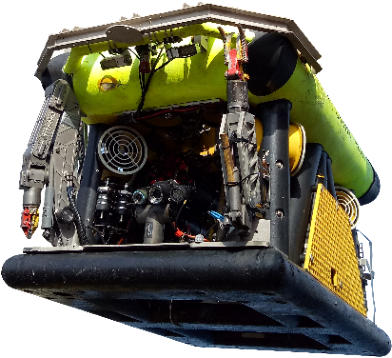

For those who prefer the convenience of sending money with just a
few clicks, “Skrill Money Transfer” is an international money transfer
service that offers more favorable rates than traditional banks.
To utilize this service, you must first register for a Skrill account by
downloading the app from Google Play or the App Store or visiting their
website at "https://skrill.com/en" and clicking the button "register."
Once registered, you can log in to your account and send money to
anyone registered on Skrill or make an international money transfer
by following step-by-step instructions.
As mentioned above, our bank account details are indicated in the
"About Us” section, which can be accessed via the navigation bar.
If the recipient's bank information is unavailable, funds can be sent
using their email address (for us, use: "management@diving-rov-
specialists.com"`). The transferred amount typically becomes
immediately available once it is completed.
More information is available by clicking the logo below.
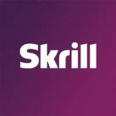
The search engine above allows for finding
documents and addresses using keywords.
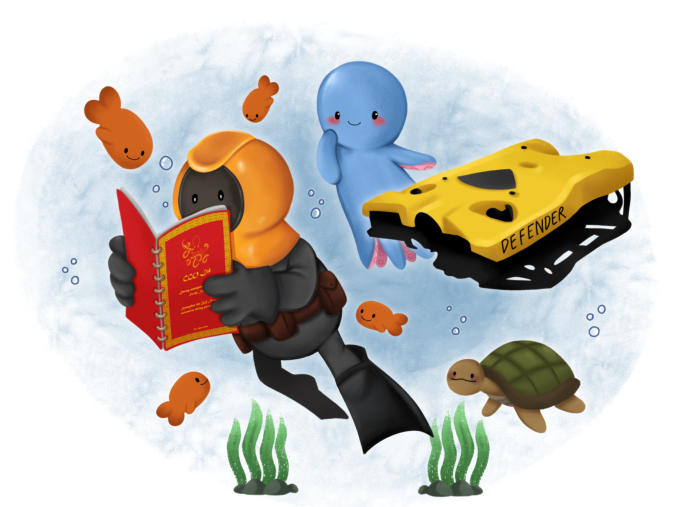

Edition of the 29th of August 2025
This section contains papers dealing with technologies applicable
to remotely operated and autonomous underwater vehicles. They
can be considered scientific studies dedicated to the above-
mentioned equipment.
61 documents have been added to our database, which contains
documents from the fifties to the present days.
Click on the button below to open the list of these new documents.


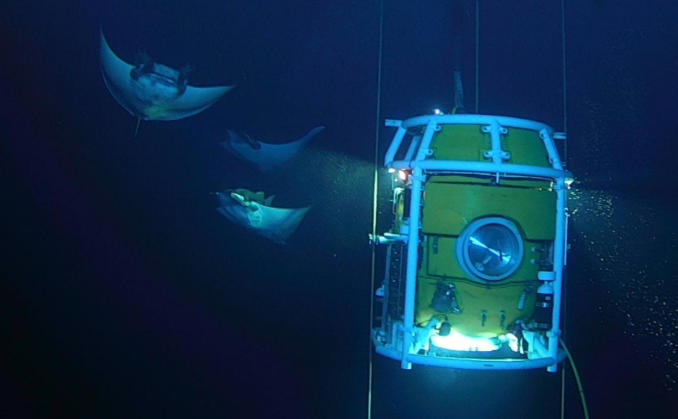
Courtesy of Fabrice Pipault

Note the documents “BMP Maritime Security” and “Maritime Industry
Security Treat Overview (MISTO)” below, which have been edited with
the support of most of the organizations listed in this section. Applying
the recommendations from these documents will:
•
Assist in planning voyages and offshore activities.
•
Improve understanding of marine threats and their impacts.
•
Reduce the likelihood of involvement in a maritime security incident.
•
Help determine mitigations to keep the crew and ship safe.
•
Provide reference information sources.
•
Specify contacts and reporting procedures for emergencies and
welfare assistance.
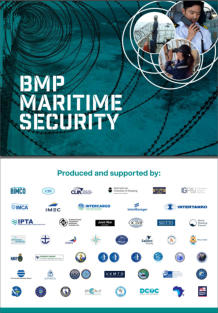
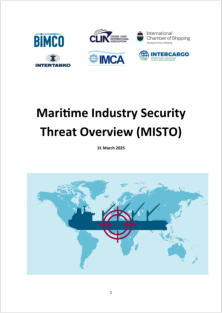

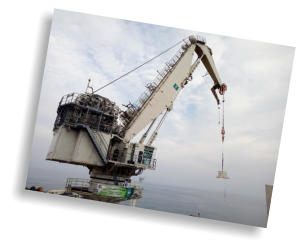
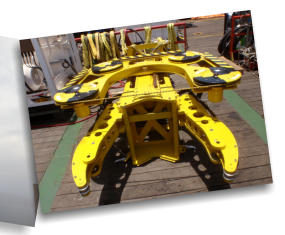
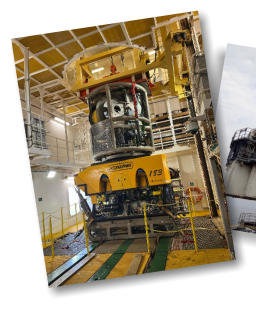

The Diving Management Study CCO Ltd. #13,
“Gap analysis between NORMAM-15/DPC-
2011 and NORMAM-222/DPC saturation
diving procedures”, compares the original
COMEX-based 2011 saturation procedures
with the new NORMAM-222/DPC procedures
published in 2023 to determine whether the
new guidelines align with the original
decompression model and, if changes exist,
whether they are documented and consistent.
The surface-supplied diving manuals MT-92
and DCIEM have been consolidated into a
single handbook comprising 8 books that
better emphasize the comprehension and
prevention of accidents related to diving
operations, the description and maintenance
of surface-supplied diving systems, the
management of weather, communications,
surface support, and underwater vehicles, as
well as the implementation of the MT-92 and
DCIEM decompression procedures.
Many new documents have been added to the website database, which
will be included in future "Diving Management Studies CCO Ltd" and
manuals. In the meantime, the diving management studies and
manuals below have been created or updated:

The study CCO Ltd. No. 5, initially titled
"Implement NORMAM-15 /DPC," is now titled
"Implement NORMAM-15 /DPC-2011
Saturation Diving Procedures" to reflect the
findings of the gap analysis mentioned above,
which reveals that NORMAM-222/DPC is no
longer compliant with the original COMEX
procedure published in 2011 and is both
undocumented and inconsistent, resulting in
its non-adoption.
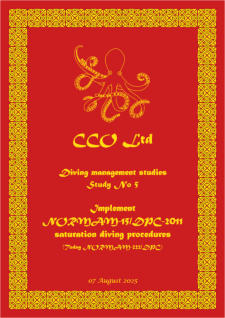
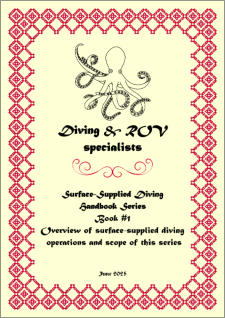
"Compression and excursion parameters
for saturation dives 0-250 msw”
NUI has been required by the Petroleum
Safety Authority Norway (PSA) to compare
commercial heliox saturation compression
and excursion procedures for diving up to
250 msw. This study is an example of how
competent bodies should proceed to ensure
that national procedures are correctly
documented and current.
"Diving practices within the technical diving
community and behavior towards self-
reported unusual symptoms" is a study
based on the analysis of responses from
558 recreational divers with advanced
certification levels to relevant questionnaires.
The study revealed that treatment of diving
accidents appears to be neglected despite the
divers' high knowledge levels. We consider
that commercial divers should also take into
account the conclusion of this study.
We continue to enrich our database with scientific documents actively.
Note that although most of these documents cover phenomena related
to diving, many of them also cover health problems associated with
the use of ROVs and various deck activities. Therefore, these papers
should be considered the basis on which guidelines and standards
should be built and should always be mentioned by the authors of
these procedures, guidelines, and standards.
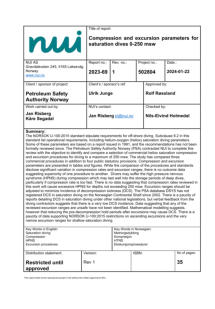
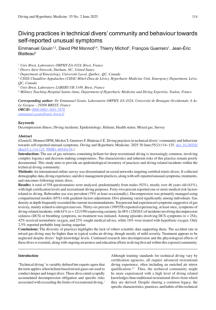
This study investigates how the integration
of biomimetic pectoral fins into a robotic
fish improves maneuverability, stability,
and braking efficiency.
A 1-DOF fin mechanism was tested on the
SpineWave robot, showing a 50% reduction
in stopping distance. The fin-assisted
modes enable precise control, promising
advances in underwater exploration,
monitoring, and rescue operations, and
laying the foundations for future research.
As mentioned in the previous editions, we continue to work
diligently to expand our database with a wide variety of
documents related to bio-inspired underwater vehicles and
advances in the field of artificial intelligence.
Among the papers included in this edition, we highlight the study
titled "Pectoral Fin-Assisted Braking and Agile Turning: A
biometric Approach to Improve Underwater Robot Maneuvrability"
by Qu He, Yunpeng Zhu, Weikun Li, Weicheng Cui, and Dixia Fan.
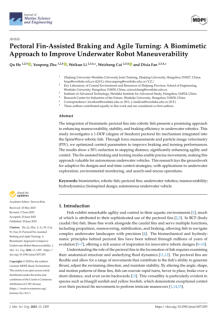
Our database has been enriched with an additional 195 papers
covering various topics, such as:
•
Diving and ROV procedures.
•
Historical diving
•
First aid
•
International conventions and national laws.
•
Technical documents regarding vessels and diving systems
•
Non-destructive inspection techniques
•
Underwater mapping
•
Underwater construction techniques
Kindly click on the provided link below to access the full list.
In addition to the documents mentioned above, environmental
concerns continue to grow. Therefore, 106 new papers on these
topics have been added to the database, whose list can be viewed
by clicking the button below.
In previous editions, we have highlighted the increasing reliance on
Remotely Operated Vehicles (ROVs) and Autonomous Underwater
Vehicles (AUVs) for non-destructive testing (NDT) inspections, mapping,
and numerous construction tasks. In addition, we should also focus on
other new techniques designed to meet the specific requirements of
construction engineering, in terms of reinforcement and life prediction
of platforms and pipelines, as outlined in the papers below:
"Prediction of Failure Pressure of Sulfur-
Corrosion-Defective Pipelines Based on
GABP Neural Networks" by Li Zhu, Yi Xia,
Bin Jia, and Jingyang Ma investigates steel
pipeline degradation in sulfur-rich
environments, and proposes a predictive
model combining the Johnson-Cook
constitutive model and a genetic algorithm
to forecast failures.
“Vibration Control of Deepwater Offshore
Platform Using Viscous Dampers Under Wind,
Wave, and Earthquake” by Kaien Jiang,
Huiyang Li, Guoer Lv, Lizhong Wang, Lilin
Wang, and Huafeng Yu explores the use of
mechanical devices designed to absorb and
dissipate kinetic energy to protect offshore
platforms against naturally occurring hazards
and prolong their life.
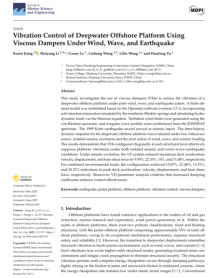
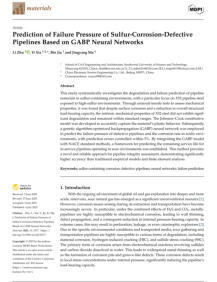
Among the numerous documents on the pollution of the marine
environment resulting from industrial activities, it must be considered
that although the petroleum and diving industries demonstrate a better
awareness of these harms and their impacts, there is still room for
improvement, as illustrated by the papers below.
The study, "Effects of Ship Pollution on
Marine Life" by Rasik Akhtar Apon reviews
the sources of pollution from ships and
marine structures, including oil spills,
garbage, sewage, chemical discharges,
engine emissions, anti-fouling paint,
various noise pollution, and the impacts of
ship-transported invasive species on
marine ecosystems.
“Offshore oil and gas infrastructure plays a
minor role in marine metapopulation
dynamics” is a paper by Ronen Galaiduk,
Dianne L. McLean, Conrad W. Speed, Dougal
Greer, Rhys McIntosh, and Eric A. Treml that
evaluates the impact of the removal of
offshore oil and gas infrastructure on marine
populations and recommends their removal
on a case-by-case basis.
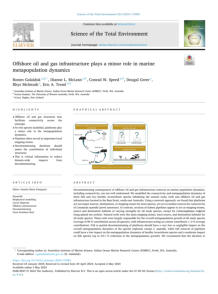
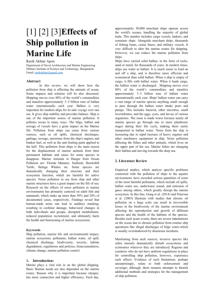
Modular floating pontoons, originating from military WWII engineering,
are now used in civil and marine operations such as diving, ROV work,
port facilities, and temporary jetties, especially in shallow, inaccessible
waters. These lightweight, road-transportable units, typically made of
steel or high-density polyethylene, consist of rectangular or square
modules assembled via proprietary clamping systems into various
configurations. They can be filled with foam for safety and equipped
with thrusters for self-propulsion. Large units can be fitted with
dynamic positioning systems. They are suitable for lakes, rivers, ports,
and even open seas and offer flexible, cost-effective surface support
and easy-to-install temporary jetties on challenging access banks.
Road-transportable modular pontoons
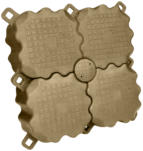
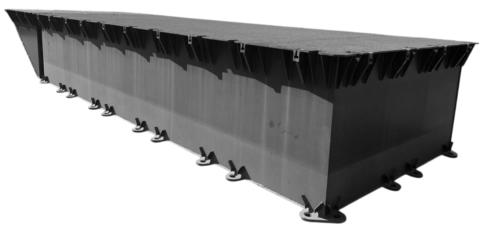


The publication of the NORMAM-222/DPC saturation diving procedures
that supersede the NORMAM-15/DPC is presented as a significant
step by the Brazilian authorities. In light of these developments, we
undertook a detailed comparison between the updated saturation diving
procedures and the original COMEX-based NORMAM-15/DPC-2011
model, which formed the foundations of the CCO Ltd Diving
Management study #5 entitled "Implement Saturation Diving
Procedures Normam-15/DPC-2011", first published in February 2019.
This analysis identified several differences between the new
NORMAM-222/DPC procedures and the initial 2011 ones, the rationales
for which are not documented in a way that allows a scientific and
technical validation, despite the explanations provided by the
authorities' representatives. Consequently, to maintain operational
safety and consistency, we recommend applying the previous
procedures NORMAM-15/DPC-2011 as described in the CCO Ltd Diving
Management study #5, pending further scientifically documented
clarifications.
Please note that our method of work is based on an approach that
emphasizes the benefits of combining regulatory updates with
transparent methodology, science-driven justification, and the collective
insight of experienced practitioners. Such a process ensures that each
change is clearly understood, widely accepted, and demonstrably
aligned with the highest safety standards.
Therefore, in addition to highlighting that the modifications made to the
NORMAM-222 saturation procedures lack documented evidence and
do not align with the “World Medical Association - Declaration of
Helsinki on Ethical Principles for Medical Research Involving Human
Subjects,” this study should be viewed as an opportunity for the
Brazilian authorities to collaboratively review these procedures,
enabling them to become a global model of highly reliable practices.
Click on the button below to open this post.
- Study No 1 - “Organize air & nitrox continuous diving operations”
- Study No 2 - “Organize the maintenance of diving cylinders”
- Study No 3 - “Implement a drug and alcohol abuse policy”
- Study No 4 - “Strengthen the US Navy saturation diving
procedures”
- Study No 5 “Implement NORMAM-15/DPC-2011 saturation
diving procedures (Today Normam222/DPC)”
- Study No 6 “A Novel Method for Estimating Diver Umbilical
Length in Dynamic Positioning (DP) Vessel
Operations”
- Document - “Description of a saturation diving system”
- Saturation diving handbook
- Book #1 - Definition and elements for preparation
- Book #2 - Gas supplies and chamber management
- Book #3 - Bell procedures
- Book #4 - Diving accidents
- Appendix
- Study No 7 - “History and evaluation of IMCA D 050 rev. 1.1 -
Minimum quantities of gas requiered offshore”
- Study No 8 - “Set a policy for electronic devices in chambers”
- Study No 9 - “Analysis of the document IOGP 411 rev. 2021 -
Recommended practices for diving operations”
- Study No 10 - “working at height during the mobilization and the
maintenance of diving and ROV systems”
- Study No 11 - “About pre-dive conditioning and commercial
diving”
- Study No 12 - “Aout standards”
- Basic rigging and lifting procedures handbook
- Surface-supplied handbook series
- Book #1 - Overview of surface-supplied diving operations and scope of his
series
- Book #2 - Description and prevention of accidents associated to diving
operations
- Book #3 - Legal aspects of project preparation
- Book #4 - Description and maintenance of surface supplied diving systems
- Book #5 - Managing weather, communications, surface supports &
underwater vehicles
- Book #6 - Prepare and manage the dives
- Book #7 - Implement the MT 92 tables
- Book #8 - Implement the DCIEM tables
Studies CCO Ltd
- Study No 13 - “Gap analysis between the NORMAM-15/DPC and
NORMAM-222/DPC saturation diving procedures”
Documents & handbooks “Diving and ROV Specialists”
Years 2018 to 2019
•
Nonlinear least square approach for range estimation based on attenuation of EM
waves in seawater using world ocean data from 1955 to 2012
Authors: Muhammad Tahir, Piao Yan, Mohsin Raza Jafri
Year 2024 - part A
•
Solar-Powered ROV: Advancing Underwater Exploration with Renewable Energy
Authors: Sani Mohammed Lawal, Shima Valizadeh, Nazila Fough, Somasundar
Kannan
•
A Digital Twin Infrastructure for NGC of ROV during Inspection
Authors: David Scaradozzi, Flavia Gioiello, Nicolò Ciuccoli, and Pierre Drap
•
Artificial Neural Network for Glider Detection in a Marine Environment by
Improving a CNN Vision Encoder
Authors: Jungwoo Lee, Ji-Hyun Park, Jeong-Hwan Hwang, Kyoungseok Noh,
Youngho Choi, and Jinho Suh
•
A Digital Twin Infrastructure for NGC of ROV during Inspection
Authors: David Scaradozzi, Flavia Gioiello, Nicolo Ciuccoli, and Pierre Drap
Year 2021
•
Hull and Aerial Holonomic Propulsion System Design for Optimal Underwater
Sensor Positioning in Autonomous Surface Vessels
Authors: Bruno A. Regina, Leonardo M. Honório, Antônio A. N. Pancoti, Mathaus F.
Silva, Murillo F. Santos, Vitor M. L. Lopes, Accacio F. Santos Neto, and Luis
G. F. Westin
•
A Mirror-Based Active Vision System for Underwater Robots: From the Design to
Active Object Tracking Application
Authors: Noel Cortes-Perez and Luz Abril Torres-Mendez
Year 2022 - part B
•
Joint elasticity produces energy efficiency in underwater locomotion: Verification
with deep reinforcement learning
Authors: Chu Zheng, Guanda Li, and Mitsuhiro Hayashibe
Year 2023 - Part A
•
AUV-Aided Optical—Acoustic Hybrid Data Collection Based on Deep
Reinforcement Learning
Authors: Fanfeng Bu, Hanjiang Luo, Saisai Ma, Xiang Li, Rukhsana Ruby, and
uangjie Han
•
ROV-based monitoring of passive ecological recovery in a deep-sea no-take fishery
reserve
Authors: Maria Vigo, Joan Navarro, Jacopo Aguzzi, Nixon Bahamón, José Antonio
García, Guiomar Rotllant, Laura Recasens, Joan B. Company.
•
A new ROV storage device for deep-sea sampling
Authors: Estefane C. Reis, Ian V. da Rocha, Maria Patricia Curbelo-Fernandez, Priscila
R. da Silva, Marcia V. Reynier
•
Optimization design of remotely operated vehicle (ROV) for Madura Strait Area
Authors: I N Afifudin, A Nasirudin, W D Aryawan, H A Kurniawati, Hasanudin, D
Utama, and E I Putra
Year 2023 - Part B
•
The Future of Underwater Robotics: Trends and Technologies in ROV Design and
Application
Author: Priyanka Das
•
A Review of the Various Control Algorithms for Trajectory Control of Unmanned
Underwater Vehicles
Authors: Adeel Bashir, Sikandar Khan, Naveed Iqbal, Salem Bashmal, Sami Ullah,
Fayyaz, and Muhammad Usman
Year 2025 - Part A
•
The risk control of rollover safety for new energy vehicles based on wire controlled
chassis system
Author: Guosheng Wang
•
Maximising the wrench capability of mobile manipulators with experiments on a
UVMS
Authors: Wilhelm J. Marais, Oscar Pizarro, and Stefan B. Williams
•
Optimization of Configuration Design for Underwater Dam Defect Detection
Vehicles
Authors: Hong-Xia Cheng, Mei-Jie Cao, Peng-Fei Xu, Yan Kai, Zi-Peng Wang, Gang
Wan, and Qiao Hu
•
Nu—A Marine Life Monitoring and Exploration Submarine System
Authors: Ali A. M. R. Behiry, Tarek Dafar, Ahmed E. M. Hassan, Faisal Hassan,
Abdullah AlGohary, and Mounib Khanafer
•
Securing BGP ASAP: ASPA and other Post-ROV Defenses
Authors: Justin Furuness, Cameron Morris, Reynaldo Morillo, Arvind Kasiliya, Bing
Wang, Amir Herzberg
•
MUFFNet: lightweight dynamic underwater image enhancement network based
on multi-scale frequency
Author: Dechuan Kong, Yandi Zhang, Xiaohu Zhao, Yanqiang Wang, and Lei Cai
•
Experimental application of gliders communication system in South China Sea.
Authors: Shuyang Jia, Baoheng Liu, Sichen Zou, and Xiaochuan Zhang
•
Adaptive formation learning control for cooperative AUVs under complete
uncertainty.
Authors: Emadodin Jandaghi, Mingxi Zhou, Paolo Stegagno, and Chengzhi Yuan
•
Editorial: Three-Dimensional Dynamic Trajectory Planning for Autonomous
Underwater Robots Under the PPO-IIFDS Framework.
Authors: Liqiang Liu, Min Sun, Enjiao Zhao, and Kuang Zhu.
•
Dynamic Task Allocation for Heterogeneous Multi-Autonomous Underwater
Vehicle Collaboration Under Mine Countermeasures Missions
Authors: Juan Li, Baohua Liu, Caiyun Liu, and Cong Lin
•
Nonlinear Sliding-Mode Super-Twisting Reaching Law for Unmanned Surface
Vessel Formation Control Under Coupling Deception Attacks.
Authors: Yifan Wang, Qiang Zhang, Yaping Zhu, Yancai Hu, and Xin Hu
•
Optimized Hydrodynamic Design for Autonomous Underwater Vehicles
Authors: Gang Fan, Xiaojin Liu, Yanan Hao, Guoling Yin, and Long He
•
Autonomous Sea Floor Coverage with Constrained Input Autonomous
Underwater Vehicles: Integrated Path Planning and Control
Authors: Athanasios K. Gkesoulis, Panagiotis Georgakis, George C. Karras, and
Charalampos P. Bechlioulis
•
Design and Simulation of ROV Wheel Electromagnetic Adsorption Structure
Authors: Zihan Sha
•
Design, Development, and Testing of a Compact Underwater ROV for Inspection
and Exploration
Authors: Mohd Shahrieel Mohd Aras, Teoh Xi Yin, Fauzal Naim Zohedi, Mohd Bazli
Bahar, Mohamad Haniff Harun, Alias Khamis, Zairi Ismael Rizman
•
Research on the Control Method for Remotely Operated Vehicle Active Docking
with Autonomous Underwater Vehicles Based on GFSMO-NMPC
Authors: Hongxu Dai, Yunxiu Zhang, Shengguo Cui, Xinhui Zheng, and Qifeng
Zhang
•
Ship Resistance Analysis of a Waterjet Remotely Operated Vehicle (ROV) Using
Computational Fluid Dynamics (CFD) Method
Authors: Eurico Leonardo Kause, Tri Susanto
•
From Camera Image to Active Target Tracking: Modelling, Encoding and Metrical
Analysis for Unmanned Underwater Vehicles.
Authors: Samuel Appleby, Giacomo Bergami, and Gary Ushaw
•
Deep Reinforcement Learning Based Active Disturbance Rejection Control for ROV
Position and Attitude Control
Authors: Gaosheng Luo, Dong Zhang, Wei Feng, Zhe Jiang, and Xingchen Liu
•
Design and mechanical analysis of wall-climbing ROV adsorption structure
Authors: Xuqing Liu, Jie Yu, Xinzhu Li, Changqin Chen, Xiao Chen, Xin Deng
•
Event-Triggered Adaptive Backstepping Control of Underactuated AUVs with Input
Saturation
Authors: Feng Qian, Yusheng Zheng, Ao Wang, and Jianping Cai
•
Refining features for underwater object detection at the frequency level.
Authors: Wenling Wang, Zhibin Yu, and Mengxing Huang
•
Underwater instance segmentation: a method based on channel spatial cross-
cooperative attention mechanism and feature prior fusion
Authors: Zhiqian He, Lijie Cao, Xiaoqing Xu, and Jianhao Xu
•
Detailed Investigation of Cobalt-Rich Crusts in Complex Seamount Terrains Using
the Haima ROV: Integrating Optical Imaging, Sampling, and Acoustic Methods
Authors: Yonghang Li, Huiqiang Yao, Zongheng Chen, Lixing Wang, Haoyi Zhou,
Shi Zhang, and Bin Zhao
•
Mid-Water Ocean Current Field Estimation Using Radial Basis Functions Based on
Multibeam Bathymetric Survey Data for AUV Navigation
Authors: Jiawen Liu, Kaixuan Wang, Shuai Chang, and Lin Pan
•
Multi-AUV Hunting Strategy Based on Regularized Competitor Model in Deep
Reinforcement Learning.
Authors: Yancheng Sui, Zhuo Wang, Guiqiang Bai, and Hao Lu
•
The Effective Business Model for Commercialization of ROV Products in Indonesia.
Authors: Imam Sutrisno, Budianto , Yuning Widiarti, Mohammad Basuki, Rahmat,
Rini Indarti, Dinda Pramanta, Pranowo Sidi
•
Work Systems in Underwater ROV Operations: Educational Insights for Workforce
Development in Maritime Engineering.
Authors: Minji Yun, Kent J. Crippen

Year 2025 - Part B
•
Control and Real-Time Monitoring of Autonomous Underwater Vehicle Through
Underwater Wireless Optical Communication
Authors: Dongwook Jung, Rouchen Zhang, Hyunjoon Cho, Daehyeong Ji,
Seunghyen Kim, and Hyeungsik Choi
•
Wide Field of View Air-to Water Rolling Shutter Based Optical Camera
Communication (OCC) Using CUDA Deep Neural Network Long Short Term
Memory (CuDNNLSTM)
Authors: Yung-Jie Chen, Yu-Han Lin, Guo-Liang Shih, Chi-Wai Chow, and Chien-
Hung Yeh
•
Model-Based AUV Path Planning Using Curriculum Learning and Deep
Reinforcement Learning on a Simplified Electronic Navigation Chart
Authors: Lukasz Marchel, Rafał Kot, Piotr Szymak, and Paweł Piskur
•
Enhanced Real-Time Simulation of ROV Attitude and Trajectory Under Ocean
Current and Wake Disturbances
Authors: Yujing Zhao, Shipeng Xu, Xiaoben Zheng, Lisha Luo, Boyan Xu, and
Chunru Xiong
•
A lightweight YOLO network using temporal features for high-resolution sonar
segmentation
Authors: Sen Gao, Wei Guo, Gaofei Xu, Ben Liu, Yu Sun, and Bo Yuan
•
Three-Phase High Power Underwater Capacitive Wireless Power Transfer System
for Autonomous Underwater Vehicles
Authors: Lei Yang, Liye Tian, Xinze Chen, Zhixue Bu, Dengrui Xing, Aimin Zhang,
and Xiangqian Tong
•
Adaptive Event-Triggered Predictive Control for Agile Motion of Underwater
Vehicles
Authors: Bo Wang, Junchao Peng, Jing Zhou, and Liming Zhao
•
Energy-Optimized Path Planning and Tracking Control Method for UV Based on
SOC State Estimation
Authors: Guangyi Yang, Zhenning Xu, Feng Wang, and Xiaoyu Zhang
•
Underwater SLAM Meets Deep Learning: Challenges, Multi-Sensor Integration, and
Future Directions
Author: Mohamed Heshmat, Lyes Saad Saoud, Muayad Abujabal, Atif Sultan,
Mahmoud Elmezain, Lakmal Seneviratne, and Irfan Hussain
•
Towards a Digital Twin for Open-Frame Underwater Vehicles Using Evolutionary
Algorithms
Authors: Félix Orjales, Julián Rodríguez-Cortegoso, Enrique Fernández-Pérez,
Alejandro Romero, and Vicente Diaz-Casas
•
Navigation Control and Signal Processing Methods for Multiple Autonomous
Unmanned Systems
Authors: Haoqian Huang, Bing Wang, and Yuan Yang
•
Task Allocation and Path Planning Method for Unmanned Underwater Vehicles
Authors: Feng Liu, Wei Xu, Zhiwen Feng, Changdong Yu, Xiao Liang, Qun Su, and
Jian Gao
•
AUV Trajectory Planning for Optimized Sensor Data Collection in Internet of
Underwater Things
Authors: Talal S. Almuzaini, and Andrey V. Savkin
•
Hydrodynamic Calculation and Analysis of a Complex-Shaped ROV Moving near
the Wall Based on CFDs
Authors: Mengjie Jiang, Chaohe Chen, Zhijia Suo and Yingkai Dong
•
Better interaction experience: human-machine interface for soft robotic systems
Authors: Zeyu Gao, Zhiyuan Liao, Chunquan Li
•
Hierarchical Adaptive Fixed-Time Formation Control for Multiple Underactuated
Autonomous Underwater Vehicles Under Uncertain Disturbances and Input
Saturation
Authors: Jiacheng Chang, Lanyong Zhang, Yifan Tan, Xue Fu, and Hongjun Yu
•
ROVs Utilized in Communication and Remote Control Integration Technologies for
Smart Ocean Aquaculture Monitoring Systems
Authors: Yen-Hsiang Liao, Chao-Feng Shih, Jia-Jhen Wu, Yu-Xiang Wu, Chun-
Hsiang Yang, and Chung-Cheng Chang
•
Energy-Optimized Path Planning for Fully Actuated AUVs in Complex 3D
Environments
Authors: Shuo Liu, Zhengfei Wang, Tao Wang, Shanmin Zhou, Yu Zhang, Pengji
Jin, and Guanjun Yang
•
Enhanced AUV Autonomy Through Fused Energy-Optimized Path Planning and
Deep Reinforcement Learning for Integrated Navigation and Dynamic Obstacle
Detection.
Authors: Kaijie Zhang, Yuchen Ye, Kaihao Chen, Zao Li, and Kangshun
•
Pectoral Fin-Assisted Braking and Agile Turning: A Biomimetic Approach to
Improve Underwater Robot Maneuverability
Authors: Qu He, Yunpeng Zhu, Weikun Li, Weicheng Cui, and Dixia Fan
•
Multi-Information-Assisted Bistatic Active Sonar Target Tracking for Autonomous
Underwater Vehicles in Shallow Water
Authors: Zhanpeng Bao, Yonglin Zhang, Yupeng Tai, Jun Wang, Haibin Wang,
Chao Li, Chenghao Hu, and Peng Zhang
Cultural activities
Page 1 of 6
•
Production of underwater concrete, with Rescon T anti washout admixture.
Publisher: Mapei company
•
Underwater Concreting
Publisher: Anime Edu – Civil Engineering
•
Piping stress analysis - Tutorial for biginners
Publisher: Technical Studies
•
How to fit up a 90 degree elbow rotated to any degree
Publisher: Technical Studies
Website Architecture:
We aim to facilitate effortless information retrieval for our
readers. To achieve this, we have maintained a conventional
navigation bar at the top of every page, presenting five primary
categories that lead to subcategories, as shown in the schematic
below. Sliding menus are also incorporated into subsections
containing multiple pages or topics. Moreover, anchor tags are
used on each topic's page to enable easy navigation to its other
related pages. Additionally, the site offers a wealth of hyperlinks
for downloading documents and accessing other websites.
Year 2005
•
World Health organization - Handbook for good clinical research (GCP)
•
Comparison between two methods for estimating pneumothorax size from chest
X-rays
Authors: Anne-Maree Kelly, Daragh Weldon, Anna Y.L. Tsang, Colin A. Graham
Years 1960 to 1975
•
A clinical study of electrical accidents
Author: W.R. Lee
•
Mild Nitrogen Narcosis ?
Authors: E. C. Potrtrou, A. Carpenter, M. J. Catton
•
Changes in blood and plasma volumes in dogs during decompression sickness
Authors: Alfred A. Bove, John M. Hallenbeck, and David H. Elliott
Years 1976 to 1979
•
CIOMS: Medical experimentation and the protection of human right
Years 1980 to 1985
•
Abstract session: Ventilation - Gas exchange - Cardiovascular
Authors: H.D. Van Liew, C.V. Paganelli, J.R. Clarke, L.D. Homer, D.D Hickey, D.C.
Marky, R.J. Smith, J..V Salzano, R.E. Moog and B. Stolp, K. Seqadal, R. E.
Petersony, G. Bo1stad, J. E. Jacobsen, D.D Hickey, C.E.G. Lundgren. D.R.
Pendergast, Ht Swanson, J.T. Doubt and D.B. Evans
•
Heat loss and tolerance time during cold exposure in heliox atmosphere at 16 ATA
Authors: A. O. Brubakk, S. Tonjum, B. Holand, R. E. Peterson, R.W. Hamilton, E.
Morild, and J. Onarheim
•
Effect of compression rate on use of trimix to ameliorate HPNS in man to 686 m
(2250 ft)
Authors: P. B. Bennett, R. Coggin, and M. McLeod
•
Patterns of interaction of effects of light metabolically inert gases with those of
hydrostatic pressure as such—a review
Authors: R.W. Brauer, P.M. Hogan, M. Hugon, A.G. Macdonald, & K.W. Miller
•
Estimation of oxygen uptake from heart rate response to undersea work
Author: J. Dwyer
•
Influence of exercise on maximal voluntary ventilation and forced expiratory flow at
depth
Authors: D. D. Hickey, C. E. G. Lundgren, AND A. J. Pasche
•
Effects of variations in time pattern of nitrogen addition on development of HPNS
in mice
Authors: R. W. Brauer and W. M. Hinson
•
Effects of helium-oxygen and hyperbaric helium-oxygen environment on drug-
metabolizing enzyme activity in rat liver
Authors: J. D. Geiger, T. K. Akers, and S. S. Parmar
Years 1986 to 1989
•
Alveolar Plateau Caused by P-V Heterogeneity and Cardiogenic Oscillations
Generated by Differential Effect of the Heart - A Model
Author: Ran Arieli, Fred Wiener
•
A developer’s view of new decompression procedure
Authors: R.W Hamilton
•
Doppler Physics and lnstrumentation
Authors: W.R. Hedrick & D.L. Hykes
Years 1990 to 1995
•
Possible NMDA antagonist properties of drugs that affect high pressure
neurological syndrome
Authors: M. Anthony Shuker, Frank Bowser-Riley & 'Stephen N. Davies
•
Perception of Thermal comfort during narcosis
Authors: J.B. Mekjavic, T. Passias, C.J. Sundberg, & O. Eiken
•
Development of anxiety symptoms during a deep diving experiment
Authors: J.H Abraini, M. Ansscau. E. Martinez, H. Burner, J. Wauthy, and C. Lemaire
•
Electroencephalographic study of divers with histories of neurological
decompression illness
Authors: A.W. Murrison, E Glasspool, R.J. Pethybridge, T.J.R. Francis, E.M. Sedgwick
•
Comparison Between Subjective Feelings to Alcohol and Nitrogen Narcosis: A Pilot
Study
Authors: M.G. Monteiro, W. Hernandez, N.B. Figlie, E. Takahashi, M. Korukian
Years 2000 to 2002
•
Recreational scuba diving, patent foramen ovale and their associated risks
Authors: Markus Schwerzmann, Christian Seiler
Year 2006
•
Accidents en plongee subaquatique en milieu hyperbare
Authors: J.-E. Coulange, J.-E.Blatteau, O. Le Pennetier, F. Joulia, P. Constantin, A.
Desplantes, A. Henckes, V. Lafay, A. Kauert, R. Pignel, B. Barberon, P.
Louge, A. Barthélémy
Years 1996 to 1998
•
Effects of N2O narcosis on breathing and effort sensations during exercise and
inspiratory resistive loading.
Authors: D.M. Fothergill, & A. Carlson
•
Convention for the Protection of Human Rights and Dignity of the Human Being
with regard to the Application of Biology and Medicine: Convention on Human
Rights and Biomedicine (Convention of Oviedo)
•
Experiment of nitrox saturation diving with trimix excursion.
Author: Shi Zhnog-yuan
Year 2007
•
Nazi War Crimes and Japanese Imperial Government Records Interagency
Working Group - Final Report to the United States Congress
Year 2008
•
Post effect of repetitive exposures to pressure nitrogen-induced narcosis on the
dopaminergic activity at atmospheric pressure.
Authors: C. Lavoute, M. Weiss, JM Sainty, JJ Risso, JC Rostain
Year 2009
•
Guiding principles in choosing a therapeutic table for DCI hyperbaric therapy
Authors: C. Antonelli, F. Franchi, M. E. Della Marta, A. Carinci, G. Sbrana, P. Tanasi, L.
De Fina, M. Brauzzi
•
Oxidative stress in the pathogenesis of diffuse lung diseases: A review
Authors: E. Bargagli, C. Olivieri, D. Bennett, A. Prasse, J. Muller-Quernheim, P. Rottoli
Year 2011
•
The genetic component of the forced diving bradycardia response in mammals
Authors: Andreas Fahlman, Brian L. Bostrom, Kiran H. Dillon, and David R. Jones
Year 2012
•
Pressure-selective modulation of NMDA receptor subtypes may reflect 3D structural
differences
Authors: Amir Mor, Yosef Y. Kuttner, Shiri Levy, Merav Mor, Michael Hollmann, and
Yoram Grossman
•
Psychomotor function during mild narcosis induced by subanesthetic level of
nitrous oxide: individual susceptibility beyond gender effect
Publisher: Miroljub Jakovljevic, Gaj Vidmar, Igor B. Mekjavic
•
The Undersea and Hyperbaric Medical Society. A report on the annual scientific
meeting 2012, Phoenix, AZ, USA June 21 – 23
Authors: Michael H Bennett
Year 2013
•
Diffusion tensor MRI of spinal decompression sickness
Authors: Elizabeth B. Hutchinson, Aleksey S. Sobakin, Mary E. Meyerand, Marlowe
Eldridge, and Peter Ferrazzano
•
Salivary Biomarkers: Toward Future Clinical and Diagnostic Utilities.
Authors: Janice M. Yoshizawa, Christopher A. Schafer, Jason J. Schafer, James J.
Farrell, Bruce J. Paster, David T. W. Wong
Year 2014
•
A note on arterial to venous oxygen saturation as reference for NIRS-determined
frontal lobe oxygen saturation in healthy humans
Authors: Henrik Sørensen, Niels H. Secher and Peter Rasmussen
•
Cerebral oxygenation and hyperthermia
Authors: Anthony R. Bain, Shawnda A. Morrison, and Philip N. Ainslie
•
Selective modulation of cellular voltage-dependent calcium channels by hyperbaric
pressure—a suggested HPNS partial mechanism
Authors: Ben Aviner, Gideon Gradwohl, Merav Mor Aviner, Shiri Levy, and Yoram
Grossman
•
Memory and Metacognition in Dangerous Situations: Investigating Cognitive
Impairment From Gas Narcosis in Undersea Divers
Authors: Malcolm Hobbs, Philip A. Higham, Wendy Kneller
•
Effects of cold exposure on behavioral and electrophysiological parameters related
with hippocampal function in rats
Authors: Hajar Elmarzouki, Youssef Aboussaleh, Soner Bitiktas, Cem Suer, A. Seda
Artis, Nazan Dolu, and Ahmed Ahami
Year 2010
•
Hyperbaric pressure effects on voltage-dependent Ca+2 channels: Relevance to
HPNS
Authors: Ben Aviner, Yehudit Gnatek, Gideron Gradwohl, Yoram Grossman
•
The Heat Shock Response: Life on the Verge of Death
Authors: Klaus Richter, Martin Haslbeck, and Johannes Buchner
•
Case report: Hyperbaric oxygen in the treatment of puff adder (Bitis arietans) bite
Author: Peter p. Rainer, Petr Kaufmann, Freyja M. Smalle-Juettner, Guenter J. Krejs
Years 1600 to 1959
•
Word Medical Association: International code of medical ethics - Declaration of
Geneva.
•
Carbon dioxyde Narcosis and the management of advanced pulmonary
insuficiency.
Authors: J.A.P Pare, J.W. Morton, B. Rose
•
Electrical shock
Author: Wills Maclachlan
Year 1999
•
Arterial baroreflex control during mild-to-moderate nitrous oxide narcosis
Authors: A. Osellund, P. Sundblad, A. K. Demetriades, D. Linnarsson
Year 2003
•
SARMAC V 2003 abstracts - Discussants: The effects of nitrogen narcosis on
metacognition in divers
(Conference: Society for Applied Research in Memory and CognitionAt: Aberdeen,
ScotlandAffiliation: University of Plymouth)
•
Change in strategy of solving psychological tests: Evidence of nitrogen narcosis in
shallow air-diving.
Author: N.M. Petri
Year 2015
•
Techniques actuelles de sauvetage des sous-marins. Contexte de mise en oeuvre
du Nato Submarine Rescue System.
Authors: J.-E. Blatteau, C. Peny, F. Lec|ercq, C. Robinet, E. Gempp, P. Louge, S. de
Maistre, J.-M. Pontier, P. Constantin, M. Hugon.
•
Inert gas narcosis disrupts encoding but not retrieval of long term memory
Authors: Malcolm Hobbs, Wendy Kneller
•
Job Exposure Matrix for Electric Shock Risks with Their Uncertainties
Authors: Ximena P. Vergara, Heidi J. Fischer, Michael Yost, Michael Silva, David A.
Lombardi, and Leeka Kheifets
•
The effect of hyperbaric air on the electric activity of neuronal in vitro networks
Authors: Marco Stubbe, Matthias Nissen, Jessica Schroeder, Jan Gimsa
•
Exercise-induced cardiovascular responses during combined normobaric vs.
hypobaric and normoxic vs. hypoxic acute exposures in military air pilot trainee
Authors: Nicolas Bourdillon, Mathias R. Aebi, Denis Bron, Grégoire P. Millet
•
Diving bradycardia of elderly Korean women divers in cold seawater: a field report
Authors: Joo-Young Lee, Hyo-Hyon Lee, Siyeon Kim, Young-Joon Jang
•
Alternate electrode placement for whole body and segmental bioimpedance
spectroscopy.
Authors: T L Grisbrook, P Kenworthy, M Phillips, P M Gittings, F M Wood, and
D W Edgar
Year 2016
•
Assessment of the interaction of hyperbaric N2 , CO2 , and O2 on psychomotor
performance in divers
Authors: J. J. Freiberger, B. J. Derrick, M. J. Natoli, I. Akushevich, E. A. Schinazi, C.
Parker, B. W. Stolp, P. B. Bennett, R. D. Vann, S. A. S. Dunworth, and R. E.
Moon
Year 2017
•
Executive Functions of Divers Are Selectively Impaired at 20-Meter Water Depth
Authors: Fabian Steinberg, and Michael Doppelmayr
Year 2018
•
A Scoring System for Prediction and Risk Stratification of CO2 Narcosis
Authors: Chang Yang, Jing Xi, Sadaf Sheikh, Anoushiravan Hakim, Soumya Nadella,
Suresh Dhital, Margaret Meier, Onyema Nnanna, and David Meyers
•
The Effect of Oxygen Enrichment on Cardiorespiratory and Neuropsychological
Responses in Workers With Chronic intermittent Exposure to High Altitude (ALMA,
5,050 m)
Authors: Fernando A. Moraga, Iván López, Alicia Morales, Daniel Soza, and Jessica
Noack
•
Pain Input After Spinal Cord Injury (SCI) Undermines Long-Term Recovery and
Engages Signal Pathways That Promote Cell Death
Authors: Joel D. Turtle, Misty M. Strain, Joshua A. Reynolds, Yung-Jen Huang, Kuan
H. Lee, Melissa K. Henwood, Sandra M. Garraway, and James W. Grau
•
Single-Cell Separation
Authors: Shilpi Pandey, Ninad Mehendale, and Debjani Paul
•
One-channel EEG monitor for tracking the depth of narcosis
Authors: V A Simon, V A Gerasimov, D K Kostrin, L M Selivanov and A A Uhov
•
Reactive Oxygen Species Formation in the Brain at Different Oxygen Levels: The
Role of Hypoxia Inducible Factors
Authors: Ruoli Chen, U Hin Lai, Lingling Zhu, Ayesha Singh, Muhammad Ahmed,
and Nicholas R. Forsyth
•
Swimming induced pulmonary oedema in athletes – a systematic review and best
evidence synthesis
Authors: Erik Hohmann, Vaida Glatt, and Kevin Tetsworth



Year 2025
•
In-water Electrical Impedance Tomography: EIT and the Sea
Authors: Andy Adler, Tarek el Harake, Martina Mosing, Andreas Fahlman
•
Hydrogen and oxygen isotopes in vertebrate tissues vary by diet type
Authors: Linda M. Reynard 1, Jennifer N. Leichliter, Daniela E. Winkler, Marcus
Clauss, and Thomas Tütken
•
Divergent thinking in groups during cold-water immersion is impaired by cold
stress not the cold shock response
Authors: Max Kailler Smith, Rebecca Weller, Tony Duong, Rebecca McClintock,
Matthew Peterson, Nathaniel Barr, Douglas M. Jones, and Timothy
L. Dunn
•
The Impact of Recreational Diving to a Depth of 40 m on Selected Intracellular
DAMPs
Authors: Anna Nowakowska, Małgorzata Marchelek-My´sliwiec, Marta Skórka-
Majewicz, Wojciech ˙Zwierełło, Konrad Grzeszczak, and Izabela Gutowska
•
Measuring the research productivity on environmental toxicology: A scientometric
study
Authors: Shanmuganathi Ayyankalai, Srinivasaragavan Subburaj, Prasanna Kumari
Nataraj
•
The Impact of Recreational Diving to a Depth of 40 m on Selected Intracellular
DAMPs
Authors: Anna Nowakowska, Małgorzata Marchelek-Mysliwiec, Marta Skórka-
Majewicz, Wojciech ˙Zwierełło, Konrad Grzeszczak, and Izabela Gutowska
•
Case study on the diving ability of the Bajo tribe in Indonesia
Authors: Sandra Arhesa, Amung Ma’mun, Boyke Mulyana, Nina Sutresna, Silvia
Agustin
•
An experimental rat model of electric shock injury with isolated electric shock
and water conduction: the histopathological changes on the skin and internal
organs and the effect on biochemical Parameters.
Authors: Ahmet Sedat Dünda, Mucahit Oruç, Osman Celbis Emine, Türkmen
samdancı, Ayse Nur Akatlı, Hasan Okumus, Çagatay Taskapan, Onural
Özhan, Hakan Parlakpınar
•
An EPHA2-centered gene regulatory network associates with hyperbaric oxygen
treatment response in perianal fistulizing Crohn’s disease patients.
Authors: I.C.N Fung, L.G.M. Mulders, R. Weiss, I.A.M van Thiel, K.J. Beek , I. Admiraal,
C. Verseijden, J. Verhoeff, M. Zwart, M.L. Ridderikhof, J. Tielbeek, J. Stoker,
R.A. van Hulst, C.J. Buskens, M.E. Wildenberg, K.B. Gecse , A.Y.F. Li Yim,
W.J. de Jonge, G.R. D’Haens
•
Diving into discomfort: orofacial pain dynamic—A systematic Review.
Authors: Lubna A. Alolaiwi, Fawziah A. Alzahrani, and Sulaiman A. AlShammari
•
Extremely deep bounce dives: planning and physiological challenges based on the
experiences of a sample of French-speaking technical Divers
Authors: Emmanuel Gouin, Emmanuel Dugrenot, Bernard Gardette
•
Diving practices in technical divers’ community and behaviour towards self-
reported unusual symptoms
Authors: Emmanuel Gouin, David PM Monnot, Thierry Michot, François Guerrero,
Jean-Éric Blatteau
•
Mechanisms of Drowning in Children: Influence of Cold Shock Response on
Repolarization Patterns and Arrhythmia Burden in Healthy Children.
Author: Sophie Peter
Year 2019
•
Spinal Decompression Sickness in an Experienced Scuba Diver: A Case Report and
Review of Literature.
Authors: Altaf Saadi, Emily A. Ferenczi, and Haatem Reda
•
Oxygen toxycity and diving headache
Author: Ran Arieli
•
Inhibition of NR2B-containing NMDA receptors during nitrogen narcosis.
Author: Bin Peng, Du-Du Hao, Xia Li, Guo-Hua Wang, Zong-Yu Guan, Zheng-Lin
Jiang
Year 2020 - part A
•
Hyperacute brain magnetic resonance imaging of decompression illness in a
commercial breath-hold diver
Authors: Kiyotaka Kohshi, Yoshitaka Morimatsu, Hideki Tamaki, Tatsuya Ishitake,
Petar J. Denoble
Year 2024 - Part B
•
Five sessions of hyperbaric oxygen for critically ill patients with COVID-19-induced
ARDS: A randomised, open label, phase II trial
Authors: Anders Kjellberg, Johan Douglas, Michael T. Pawlik, Adrian Hassler, Sarah
Al-Ezerjawi, Emil Bostrom, Lina Abdel-Halim, Lovisa Liwenborg, Anna-Dora
Jonasdottir-Njastad, Jan Kowalski, Sergiu-Bogdan Catrina, Kenny A.
Rodriguez-Wallberg, Peter Lindholm
•
Sex differences in autonomic functions and cognitive performance during cold-air
exposure and cold-water partial immersion
Authors: Youngsun Kong, Md Billal Hossain, Riley McNaboe, Hugo F. Posada-
Quintero, Matthew Daley, Krystina Diaz, Ki H. Chon 1 and Jeffrey
Bolkhovsky
•
Shock Waves of the Electric Field—Part 2: Experimental Studies of Vysikayl’s Jumps
and Plasma Nozzles in Plasma With Current
Author: Haixin Tong, Xiangjun Zeng, Kun Yu, and Zehua Zhou
•
Dynamic Impedance Model of Low-Voltage Electric Shock in Animals Considering
the Influence of Water Electrolysis
Author: Haixin Tong, Xiangjun Zeng, Kun Yu, and Zehua Zhou
•
Electrical shock injuries: an analysis of voltage, frequency, and contact mode
determinants
Authors: Suma Gangidi, Mukul Govande, Kyle McCollum, and Raphael C. Lee
•
Assessment of Incidents and Immediate Consequences of Electric Shocks among
Nigerians
Authors: Abiodun Ayodeji Ojetoye, Kehinde Monsuru Adeleke, Samson Ayorinde
Akangbe, Matthew Afolabi Oke, Abimbola Oluwatayo Orisawayi
•
Oral Health Complications of SCUBA Diving
Authors: Irena Sionek-Wrega, Jakub Wrega
•
Oxygen is toxic in the cold in C. elegans
Auhors: Cameron M. Suraci, Michael L. Morrison and Mark B. Roth
•
Does Heart Rate Variability Predict Impairment of Operational Performance in
Divers?
Authors: John Freiberger, Bruce Derrick, Ki H. Chon, Md Billal Hossain, Hugo F.
Posada-Quintero, Mary Cooter, and Richard Moon
•
Risk Factors Associated with Middle Ear Barotrauma in Patients Undergoing
Monoplace Hyperbaric Oxygen Therapy.
Authors: Yoon Sung Lee, Sang Won Ko, Hyoung Youn Lee, Kyung Hoon Sun, Tag
Heo, and Sung Min Lee
Year 2021 - Part A
•
Dopamine-dependent biphasic behaviour under ‘ deep diving ’ conditions in
Caenorhabditis elegans.
Authors: Inbar Kirshenboim, Ben Aviner, Eyal Itskovits, Alon Zaslave, and Limor
Broday
•
Case Studies in Physiology: Breath-hold diving beyond 100 meters -
cardiopulmonary responses in world-champion divers
Author: Alexander Patrician, Christopher Gasho, Boris Spajic, Hannah G. Caldwell,
Darija Bakovic -Kramaric, Otto Barak, Ivan Drvis , Zeljko Dujic, and Philip N.
Ainslie.
•
Rapid ping-pong eye deviation following a recovery from carbon dioxide narcosis.
Authors: Shuichiro Neshige, Ohno Narumi, Shiro Aoki, Hirofumi Maruyama.
•
Reply: Commentary on using critical flicker fusion frequency to measure gas
narcosis
Authors: Xavier CE Vrijdag, Hanna van Waart, Jamie W Sleigh, Simon J Mitchell
•
Commentary on using critical flicker fusion frequency to measure gas narcosis.
Authors: Jacek Kot, Pawel J Winklewski
•
Fatalities involving divers using surface-supplied breathing apparatus in Australia,
1965 to 2019.
Author: John Lippmann
Year 2021 - Part B
•
The pathophysiologies of diving diseases
Authors: C.J. Edge, and P.T. Wilmshurst
•
Bioelectric impedance analysis for body composition measurement and other
potential clinical applications in critical illness.
Authors: Hanneke Pierre Franciscus Xaverius Moonen, and Arthur Raymond
Hubert Van Zanten
•
Intercostal Muscles Oxygenation and Breathing Pattern during Exercise in
Competitive Marathon Runners
Author: Felipe Contreras-Briceño, Maximiliano Espinosa-Ramírez, Eduardo Moya-
Gallardo, Rodrigo Fuentes-Kloss, Luigi Gabrielli, Oscar F. Araneda, and
Ginés Viscor
•
Effect of Cold Stress on Neurobehavioral and Physiological Parameters in Rats
Authors: Hajar El Marzouki, Youssef Aboussaleh, Mohamed Najimi, Fatiha Chigr,
and Ahmed Ahami
•
Reactive Oxygen Species: Do They Play a Role in Adaptive Immunity?
Authors: Esen Yonca Bassoy, Michael Walch, and Denis Martinvalet
Year 2022 - Part A
•
Editorial: The Role of Reactive Oxygen Species in Protective Immunity
Authors: Denis Martinvalet, and Michael Walch
•
VOxygen Uptake Measurements and Rate of Perceived Exertion During a
Marathon
Authors: Véronique Billat, Luc Poinsard, Florent Palacin, Jean Renaud Pycke, and
Michael Maron
Year 2022 - Part B
•
Recent advances in the use of high flow nasal oxygen therapies
Authors: Kara D. Wyatt, Neha N. Goel, and Jessica S. Whittle
•
Carbon dioxide tolerability and toxicity in rat and man: A translational study
Authors: Rutger van der Schrier, Monique van Velzen, Margot Roozekrans, Elise
Sarton, Erik Olofsen, Marieke Niesters, Chantal Smulders, and Albert
Dahan
Year 2023 - Part A
•
Promising applications of human-derived saliva biomarker testing in clinical
diagnostics
Authors: Mengyuan Song, Hao Bai, Ping Zhang, Xuedong Zhou, and Binwu Ying
•
Estimated power output for a distance run and maximal oxygen uptake in young
adults
Authors: Gen-Min Lin, Kun-Zhe Tsai, Xuemei Sui, and Carl J. Lavie
•
Assessing Critical Flicker Fusion Frequency: Which Confounders? A Narrative
Review
Author: Thomas Muth, Jochen D. Schipke, Anne-Kathrin Brebeck, and Sven Dreyer
•
The levels of processing effect under nitrogen narcosis
Publishers: Wendy Kneller, & Malcolm Hobbs
Year 2023 - Part B
•
Problems in Selecting a Decompression Table for Saturation Diving for Commercial
Purposes in Poland. Part III C: Technical and Organisational Issues of the
Implementation of Saturation Diving in Poland from the 1990s Onward. Part 3
Authors: Stanisław Skrzynski
•
The use of dive computers in forensic investigations of fatal breath-hold diving
accidents: a case study
Authors: Hazem M. Sherif, Younis M. Albalooshi, Ahmad Al Hashemi, Islam Feteaha,
Farha H. Ismail, Mamdouh Kamal Zaki

Year 2024 - Part A
•
Compression and excursion parameters for saturation dives 0-250 msw
Author: Jan Risberg, Kare Segadal
•
Combined effects of mild hypothermia and nitrous-oxide-induced narcosis on
manual and cognitive performance
Authors: Maaike I. Moes, Antonis Elia, Mikael Gennser, and Michail E. Keramidas
•
Effects of Oxygen Prebreathing on Bubble Formation, Flow-Mediated Dilatation,
and Psychomotor Performance during Trimix Dives
Authors: Ivana Segrt Ribicic, Maja Valic, Linda Lusic Kalcina, Josko Bozic, Ante Obad,
Duska Glavas, Igor Glavicic, and Zoran Valic
•
The first deep rebreather dive using hydrogen: case report
Authors: Richard J Harris, Craig J Challen, Simon J Mitchell
•
Acute and chronic central nervous system oxidative stress/toxicity during
hyperbaric oxygen treatment of subacute and chronic neurological conditions
Authors: Paul G. Harch, and Stacey Rhodes
•
Hyperbaric oxygen therapy for thalamic pain syndrome: case report
Authors: John Benjamin Slade, Nathan Kwan, Peter Lennox and Russell Gray
•
Real-time imaging of decompression gas bubble growth in the spinal cord of live
rats.
Authors: Roman Alvarado, Ulrich M. Scheven, Jens-Christian Meiners
•
Breath-Hold Diving Injuries - A Primer for Medical Providers
Authors: Elaine Yu, DO, Juan M. Valdivia-Valdivia, Fernando Silva, and Peter
Lindholm
•
Drinker driver flyer diver
Authors: Gerard Laden, Bruce Mathew
•
Narcotic Nitrogen Effects Persist after a Simulated Deep Dive
Authors: Sven Dreyer, Johannes Schneppendahl, Martin Hoffmanns, Thomas Muth,
and Jochen D. Schipke
Year 2020 - part B
•
Hyperbaric oxygen therapy for Crohn’s disease complications: What do we know?
– Authors’ reply
Authors: CA Lansdorp and RA van Hulst
•
The Mechanism of NMDA Receptor Hyperexcitation in High Pressure Helium and
Hyperbaric Oxygen
Authors: Alice Bliznyuk, Michael Hollmann, and Yoram Grossman
•
Hyperbaric Oxygen Treatment Improves Intestinal Barrier Function After Spinal
Cord Injury in Rats
Authors: Xuehua Liu, Fang Liang, Jing Zhang, Zhuo Li, Jing Yang, and Nan Kang
•
Impaired consciousness when scuba diving associated with vasovagal syncope
Authors: Peter Wilmshurst, Margaret Clamp
•
Extensive Simulated Diving Aggravates Endothelial Dysfunction in Male Pro-
atherosclerotic ApoE Knockout Rats
Authors: Simin Berenji Ardestani, Vladimir V. Matchkov, Kasper Hansen, Nichlas
Riise Jespersen, Michael Pedersen, and Ingrid Eftedal
Year 2023 - Part C
•
Physical Properties of Helium and Application in Respiratory Care
Author: Eric Chappel
•
The Principle of Human Electric Shock and Several Main Types of Electric Shock
Author: Shixin Lin
•
Hydrogen Inhalation Reduces Lung Inflammation and Blood Pressure in the
Experimental Model of Pulmonary Hypertension in Rats
Authors: Tatyana Kuropatkina, Dmitrii Atiakshin, Fedor Sychev, Marina Artemieva,
Tatyana Samoilenko, Olga Gerasimova, Viktoriya Shishkina, Khaydar
Gufranov, Natalia Medvedeva, Tyler W. LeBaron, and Oleg Medvedev
•
Role of NMDA Receptor in High-Pressure Neurological Syndrome and Hyperbaric
Oxygen Toxicity
Authors: Alice Bliznyuk, and Yoram Grossman
•
Rapture of the deep: gas narcosis may impair decision-making in scuba divers
Authors: Pauliina A Ahti, & Jan Wikgren
Diving & ROV procedures and standards
Years 1960 to 2018
•
UK health and Safety at work act 1974
•
UK Offshore Safety Act 1992
•
UK- Diving at work regulations 1997
•
Italy: The “Code” On Health And Safety Protection Of Employees In The
Workplace (Legislative Decree 81/2008)
Authors: By Gianni, Origoni, Grippo & partners
•
Italy: Disciplina delle attività subacquee e iperbariche (Regulation of
underwater and hyperbaric activities (Italian version)
•
Italy: Health and Safety in diving and Hyperbaric professional activities -
Operational procedures - Italian version.
•
Germany: Unfallverhütungsvorschrift Taucherarbeiten (Accident
prevention regulation - Diving work)
•
The Netherlands: Working conditions decree (English, uncontrolled
version)
•
France: Arrêté du 12 décembre 2016 définissant les modalités de
formation à la sécurité des travailleurs exposés au risque hyperbare
(Decree of December 12, 2016 defining the training requirements for
workers exposed to hyperbaric risk)
•
Nigeria: Factories (Diving at work) regulations 2018
Historical Diving
•
Risk Analysis and Risk Management: An Historical Perspective
Authors: Vincent T. Covello, and Jeryl Mumpowerz
•
The Historical Development of Scientific Diving in the UK from 1955 to
2000: Part 2 - 1975 to 2000
Author: N.C.Flemming
International conventions & National laws
•
UK - Health and Safety at Work etc. Act 1974
•
Legal aspects of decompression table validation
Authors: James R Sutterfield
First aid
Years 1990 to 2021
•
Treatment of the diving casualty
Authors: D. H. Elliott, and R. de G. Hanson
•
Defibrillator Electrode-Chest Wall Coupling Agents: Influence on Transthoracic
Impedance and Shock Success.
Authors: Philip E Aylward, Robert Kieso, Pamela Hite, Francis Charbonnier, Richard
E. Kerber
•
A prospective, randomised trial of pneumothorax therapy: Manual aspiration versus
conventional chest tube drainage.
Authors: Mehmet Parlak, Steven M. Uil, Jan W.K. van den Berg
•
Outpatient management of primary spontaneous pneumothorax
Author: Stephane Jouneau, Constance Vuillard, Alexandre Sale, Yann Bazin,
Laurent Sohier, Mallorie Kerjouan, Jean-Damien Ricard, Jonathan Messika
Technical documents - Vessels
Years 1990 to 2017
•
US Patent: Marine vessel control system, marine propulsion system, and marine
vessel
Authors: Makoto Ito, Shizuoka
•
US Patent: Vessel propulsion control apparatus and marine vessel.
Authors: Yuji Hiramatsu, Shizuoka
•
US Patent: Marine vessel propulsion system and marine vessel including the same.
Authors: Yukinori Nose, Yoshiyuki Ichikawa, Makoto Mizutani
•
An Energy Management System of a Fuel Cell/Battery Hybrid Boat.
Authors: Jingang Han, Jean-Frederic Charpentier, and Tianhao Tang
•
US Patent: Vessel propulsion apparatus
Authors: Shintarou Kawaguchi
•
US Patent - Hybrid propulsion system for a vessel.
Authors: Torbjorn Haugland (Rolls Royce Marine)
•
An Analysis of Transient Overvoltages during the Energization of Electric Ship
Propulsion Systems
Authors: Morris Brenna, Federica Foiadelli, and Dario Zaninelli
Years 2018 to 2023
•
The impact of propulsion factors on vessel performance in waves
Authors: Bhushan Taskar, Pelle Bo Regener, and Poul Andersen
•
Power Models and Average Ship Parameter Effects on Marine Emissions
Inventories.
Authors: Isabela N. Brown, Michael F. Aldridge
•
The dual nature of the dead-water phenomenology: Nansen versus Ekman wave-
making drags
Authors: Johan Fourdrinoy, Julien Dambrine, Madalina Petcu, Morgan Pierre, and
Germain Rousseaux
•
Assessment of the Propulsion System Operation of the Ships Equipped with the Air
Lubrication System
Authors: Mariusz Giernalczyk, and Piotr Kaminski
•
Evaluation of the environmental and economic impacts of electric propulsion
systems onboard ships: case study passenger vessel
Authors: Nader R. Ammar, & Ibrahim S. Seddiek
•
E-Engine for a Long-Tail Boat, an Application in ASEAN (Association of Southeast
Asian Nations)-Design and Comparison with Internal Combustion Engine.
Authors: Vu Tran Tuan, Phuong Nguyen Huy, Surasak Phoemsapthawee, and
Sangkla Kreuawan
•
Electric Propulsion for Modern Naval Vessels
Authors: Calvin Corey, Gene Castles, Clive Wilgress-Pipe, & Heejong Moon
•
Validating propulsion system optimization procedure for a carrier vessel. (Doc.
written in Russian).
Authors: M. Lobachev, V. Novoselov, Yu. Polyakov, A. Rudnichenko, T. Saifullin, A.
Taranov
•
Film-Thickness Identification Method and Lubrication Characteristic Experiment of
Full-Size Water-Lubricated Stern Bearing under Offset Load
Authors: Jinjun Li, Wu Ouyang, Qilin Liu, Zhuo Zhang, and Yan Zhang
•
Life-Cycle Assessment and Costing of Fuels and Propulsion Systems in Future Fossil-
Free Shipping.
Authors: Fayas Malik Kanchiralla, Selma Brynolf, Elin Malmgren, Julia Hansson, and
Maria Grahn
•
Lifecycle Environmental Benefits with a Hybrid Electric Propulsion System Using a
Control Algorithm for Fishing Boats in Korea
Authors: Seongwan Kim, Hyeonmin Jeon, Chybyung Park, and Jongsu Kim
•
Battery-Free and Real-Time Wireless Sensor System on Marine Propulsion Shaft
Using a Wireless Power Transfer Module.
Authors: Young Chul Lee, and Van Ai Hoang
•
Using Nuclear Energy for Maritime Decarbonization and Related Environmental
Challenges: Existing Regulatory Shortcomings and Improvements
Authors: Qiuwen Wang , Hu Zhang, and Puxin Zhu
•
An SE-Based Maritime Vessel Development Framework for Changeable Propulsion
Systems
Authors: Brendan Sullivan, and Monica Rossi
•
Next Generation Electric Propulsion for 5000 Ton Combatant Vessel.
Authors: Calvin Corey, Gene Castles, Clive Wilgress-Pipe, Heejong Moon
•
Numerical analysis of 40 MW HTS motor electromagnetic characteristics for ship
electric propulsion
Authors: Kai Bo, Junquan Chen, Yapeng Jiang, & Dong Wang
Technical documents - Diving systems
Years 1980 to 2016
•
Sherwood Maximus regulator temperature and performance during Antarctic
diving
Authors: Jim G Mastro, Neal W. Pollock
•
Determining spherical lens correction for astronaut training Underwater
Author: Jason Porter, C. Robert Gibson, and Samuel Strauss
Years 2017 to 2025
•
A New Gas Analysis Method Based on Single-Beam Excitation Stimulated Raman
Scattering in Hollow Core Photonic Crystal Fiber Enhanced Raman Spectroscopy
Authors: Maryam Shirmohammad, Michael A. Short, and Haishan Zeng
•
Design and Corrosion Resistance Performance of Nano-Multilayer Coatings for the
Protection of Breathing Gas Cylinders Used in Diving.
Authors: Feng Yuan, Yunjiang Yu, Yuekai Li, Yanxiong Xiang, and Changwei Zou
•
Measurement of electromagnetic transients in high voltage substations based on
wireless transmission technique under strong electromagnetic interference.
Authors: Ceyong Wang, Lezhi Ou, Wenbing Wu, Chenghui Tan, Yi Ding and
Jinxing Zou
•
Helium Speech Recognition Method Based on Spectrogram with Deep Learning
Authors: Yonghong Chen, Shibing Zhang, and Dongmei Li
•
Guarded Hot Cylinder Apparatus for Characterization of Thermal Insulation
Systems and Materials at Liquid Hydrogen Temperatures
Authors: Adam Swanger, David Creech, Casimir Van Doorne, and Andrew Kelly
Years 2019 to Now
•
UK HSE - Diving at Work Regulations 1997 List of Approved Diving Qualifications
•
Germany: Tauchen mit Mischgas (Diving with mixed gas) - German version
•
A risk management framework for maritime Pollution Preparedness and Response:
Concepts, processes and tools
Authors: Valtteri Laine, Floris Goerlandt, Osiris Valdez Banda, Michael Baldauf,
Yvonne Koldenhof, Jorma Rytkonen
•
The Netherlands: Working under Hyperbaric Conditions - System and Maintenance
Requirements - WOD-SOE - Document code: CAT 002.4 UK
•
The Netherlands: Working under Hyperbaric Conditions - Diving Work SCUBA-
Category A1 - Document code CAT 001.5 I UK.
•
Finland - Occupational Safety and Health Act #738/2002 with amendments 2023
- English version
•
Normam-222/DPC - Maritime Authority Standards for underwater Activities -
Portugese version (Directoria de portos e costa)
•
Ergonomic risk management process for safety and health at work
Authors: Oleg Bazaluk, Vitaliy Tsopa, Serhii Cheberiachko, Oleg Deryugin,
Dmytro Radchuk, Oleksandr Borovytskyi, and Vasyl Lozynskyi
•
The Netherlands: Working under Hyperbaric Conditions - Diving Work - SSE
Document code CAT 001.6 - III UK
•
The Netherlands: Working under Hyperbaric Conditions - Diving Work - Dry diving
bell/saturation - Document code CAT 001.6 - IV UK
•
France: Code du travail - Chapitre Ier: Prévention des risques en milieu hyperbare -
version 2025 - French version
Years 2022 to 2025
•
Advances in Respiratory Monitoring: A Comprehensive Review of Wearable and
Remote Technologies
Author: Diana Vitazkova, Erik Foltan, Helena Kosnacova, Michal Micjan, Martin
Donoval, Anton Kuzma, Martin Kopani, and Erik Vavrinsky
•
Reported outcome measures in necrotising soft tissue infections: a systematic
review.
Authors: Jonathan Wackett, Bridget Devaney, Raymond Chau, Joshua Ho,
Nicholas King, Jasleen Grewal, Joshua Armstrong, Biswadev Mitra
•
Risks to the clinician of risk management: recalled and anticipated consequences of
decision-making.
Authors: Alexander Challinor, Sahil Bhandari, Sean Boyle, Mark Gabbay, , Pete
Wilson, Pooja Saini, and Rajan Nathan
•
Muscle regeneration is improved by hot water immersion but unchanged by cold
following a simulated musculoskeletal injury in humans
Authors: Valentin Dablainville, Adèle Mornas, Tom Normand-Gravier, Maha Al-
Mulla, Emmanouil Papakostas, Bruno Olory, Theodorakys Marin Fermin,
Frantzeska Zampeli, Nelda Nader, Marine Alhammoud, Freya Bayne,
Anthony M. J. Sanchez, Marco Cardinale, Robin Candau, Henri Bernardi,
and Sébastien Racinais
•
Core outcome set for research in necrotising soft tissue infection patients: an
international, multidisciplinary, modified Delphi consensus tudy
Authors: Bridget Devaney, Jonathan PC Wackett, Nicola Ma, Amanda Nguyen,
Vikash Yogaraj, Morten Hedetoft, Ole Hyldegaard, Aidan Burrell, Biswadev
Mitra
Years 2024 & 2025
•
A review on the research progress and application of compressed hydrogen in the
marine hydrogen fuel cell power system
Authors: Ji-Chao, Heng Xu, Ke Zhou, Ji-Qiang Li
•
A Study on Fishing Vessel Energy System Optimization Using Bond Graphs
Authors: Sang-Won Moon, Won-Sun Ruy, and Kwang-Phil Park
•
Hydrodynamic Development and Optimisation of a Retrofi ttable Dual-Mode
Propeller Turbine
Authors: Joylan Rao Erriah, Pengfei Liu, and Serkan Turkmen
•
Evaluation of a multiphase cascaded H-bridge inverter for induction motor
operation
Authors: B. Jyothi, P. Srinivasa Varma, C. V. Ravikumar, C. Dhanamjayulu, Tai-hoon
Kim, K. P. Prasad Rao, A. Rajesh & Shafiq Ahmad
•
Technical Study on the Comparative Planning of a Waste Collection Vessel
Propulsion System: Conventional Engine and Solar Panels
Authors: Betty Ariani, Burhana Robby
•
Impact of automation and zero-emission propulsion on design of small inland
cargo vessels
Authors: Igor Backalov, Hans-Christoph Burmeister, Ljubisav Isidorovic, Justin Jasa,
Marko Josipovic, Kristoffer Kloch, Alexandros Koimtzoglou, Vladimir
Krasilnikov, Stefan Krause, Denys Mateienko, Håvard Nordahl, Nathalie
Reinach
•
Advancing a sustainable maritime future: Integrating energy efficiency and
underwater radiated noise reduction strategies in commercial shipping
Authors: Seyedvahid Vakili, Paul White, Stephen Turnock
•
BMP Marine Security
Authors: BIMCO, International Chamber of Shipping, INTERCARGO,
INTERMANAGER, International Group of P&I Clubs, INTERTANKO, Oil
Companies International Marine Forum
•
Energy Saving Potential of Hybrid Propulsion System for Fishing Vessels in
Indonesia
Authors: Samsul Maarif, Sunaryo, Muhammad Arif Budiyanto
•
Integration of Renewable Energy in the Electrical System of Small-Scale Fishing
Vessels: a Sustainable Marine Solution
Authors: Edy Prasetyo Hidayat, Imam Sutrisno, Fais Hamzah, Fahmi Umasangadji
•
Maritime Industry Security Threat Overview - 2025
Author: MISTO
•
Propeller Open-Water Test Method for Hybrid Contra Rotating Propeller
Authors: Tomoki Wakabayashi, and Tokihiro Katsui
•
Hybrid Propulsion System Analysis for A Solar Powered Offshore Supply Vessel
Authors: Uchenna a. Robinson, Morrison Inegiyemiema
•
Optimized Diesel–Battery Hybrid Electric Propulsion System for Fast Patrol Boats
with Global Warming Potential Reduction
Authors: Maydison, Haiyang Zhang, Nara Han, Daekyun Oh, and Jaewon Jang
•
Resistance and propulsion performance of a twin skeg ship with different rudder
angle
Authors: Chen Weimin, Li Yongyue, Xing Lei, Zhang Li, & Chang Xing
•
Design and Study of a New Wave Actuator for a Boat
Authors: Phan Huy Nam Anh, Hyeung-Sik Choi, Dongwook Jung, Rouchen
Zhang, Mai The Vu, and Hyunjoon Cho
•
Novel Hybrid Aquatic–Aerial Vehicle to Survey in High Sea States: Initial Flow
Dynamics on Dive and Breach
Authors: Matthew J. Ericksen, Keith F. Joiner, Nicholas J. Lawson, Andrew Truslove,
Georgia Warren, Jisheng Zhao, and Ahmed Swidan
•
Ship trajectory prediction via a transformer-based model by considering spatial-
temporal dependency.
Authors: Xinqiang Chen, Peiyang Wu, Yuzheng Wu, Loay Aboud, Octavian
Postolache, Zichuang Wang
Non Destructive Techniques (NDT)
Years 1980 to 2023
•
Terahertz Imaging of Thin Film Layers with Matched Field Processing
Authors: Scott Schecklman, and Lisa M. Zurk
•
Laser-based imaging applications in turbid waters
Authors: Thomas Scholz, Martin Laurenzis and Frank Christnacher
•
Non-Destructive Testing Techniques for Offshore Underwater Decommissioning
Projects through Cutting Detection: A State of Review
Authors: Noor Amila Wan Abdullah Zawawi, M.S. Liew, Wesam Salah laloul, E. Lim,
Muhammad Imran, Iraj Toloue
•
Non-Destructive Evaluation of Coating Thickness Using Water Immersion
Ultrasonic Testing
Authors: Jiannan Zhang, Younho Cho, Jeongnam Kim, Azamatjon Kakhramon ugli
Malikov, Young H. Kim, Jin-Hak Yi, and Weibin Li
•
Ultrasonic Inspection for Welds with Irregular Curvature Geometry Using Flexible
Phased Array Probes and Semi-Auto Scanners: A Feasibility Study
Authors: Seong Jin Lim, Young Lae Kim, Sungjong Cho, and Ik Keun Park
•
Thickness Measurement at High Lift-Off for Underwater Corroded Iron-Steel
Structures Using a Magnetic Sensor Probe
Authors: Shoya Adachi, Minoru Hayashi, Taisei Kawakami, Yuto Ando, Jin Wang,
Kenji Sakai, Toshihiko Kiwa, Toshiyuki Ishikawa, and Keiji Tsukada
•
Fatigue assessment of flange connections in offshore wind turbines under the
initial flatness divergence.
Authors: Xingda Ji, Tao Zou, Xu Bai, Xinbo Niu, and Longbin Tao
Years 2024 to 2025
•
Evaluation of Pipe Thickness by Magnetic Hammer Test with a Tunnel
Magnetoresistive Sensor
Author: Jun Ito, Yudai Igarashi, Ryota Odagiri, Shigetaka Suzuki, Hiroshi
Wagatsuma, Kazuhiro Sugiyama, and Mikihiko Oogane
•
Introduction Remote-operated Underwater Vehicle for Inspection of Underwater
Structure
Authors: Jianghai He
•
Robotic photogrammetric underwater inspection of hydropower plants
Author: Manuela Ammann
•
Deep Learning Techniques for Enhanced Underwater Remote Sensing:
Applications in Marine Biodiversity and Infrastructure Inspection
Authors: Ayush Kumar Ojha
•
Non-destructive testing technology for corrosion wall thickness reduction defects in
pipelines based on electromagnetic ultrasound
Authors: Yifan Tian, Alexander Grigorievich Palaev, Ildar Ayratovich Shammazov
and Yiqiang Ren
•
Feasibility Study on the Use of the Coplanar Capacitive Sensing Technique for
Underwater Non-Destructive Evaluation
Authors: M. Mwelango, X. Yin, M. Zhao, Z. Zhang, Z. Han, R. Fan, P. Ma, X. Yuan,
and W. Li
•
An Underwater Robot Inspection Anomaly Localization Feedback System Based on
Sonar Technology
Authors: Siqiang Cheng, Yi Liu, Aibin Tang, Libin Yang
•
Concepts for drone based pipeline leak detection
Author: Lutz Bretschneider, Sven Bollmann, Deborah Houssin-Agbomson, Jacob
Shaw, Neil Howes, Linh Nguyen, Rod Robinson, Jon Helmore, Michael
Lichtenstern, Javis Nwaboh, Andrea Pogany, Volker Ebert, and Astrid
Lampert
•
Underwater Inspection of Submerged Elements in Masonry Bridges and Other Old
Civil Structures Using Drones
Authors: Ruben Rodríguez Elizalde
•
A Method for Recognition and Coordinate Reference of Autonomous Underwater
Vehicles to Inspected Objects of Industrial Subsea Structures Using Stereo Images.
Authors: Valery Bobkov and Alexey Kudryashov



Underwater construction
Years 1980 to 2012
•
Numerical simulation of underwater explosive shock wave with gas layer charge
Authors: Hongrui Hao, Xi Lu, and Zhengang Liang
Years 2024
•
Research on the failure mechanism of non-metallic oil pipeline flange
Authors: Yu Weng, Dejun Li, Shuxuan Jiang, Shuang Yang, Gang Wu, and
Zhian Deng
•
Limit state equation and failure pressure prediction model of pipeline with complex
loading
Authors: Ming-ming Sun, Hong-yuan Fang, Nian-nian Wang, Xue-ming Du, Hai-
sheng Zhao, & Ke-Jie Zhai
•
Uncoupled multimodal wave reflection from guide termination with different
flanges: Experimental and numerical investigation
Author: David Marx, Florent Margnat, Hélène Bailliet, Christian Prax , Zhiping Qiu,
and Jean-Christophe Valière
•
Investigation of Pipeline CO2 Leakage and Diffusion on Offshore Platforms Based
on Numerical Simulation
Authors: Yang Cao, Tao Liu, Guangchun Song, Wei Zhou, Hui Han, Yuxing Li,
Qihui Hu, and Ruidong Jing
•
Review of "cold shock" cases in operation of loop heat pipes and related thermal
instabilities
Authors: L Ivanovskis, and D Mishkinis
•
Effect of seawater salinity, pH, and temperature on external corrosion behavior and
microhardness of offshore oil and gas pipeline: RSM modelling and optimization
Author: Imran Mir Chohan, Azlan Ahmad, Nabihah Sallih, Naraindas Bheel,
Waleligne Molla Salilew, & Abdulrazak H. Almaliki
•
Research on calibration method for flange-type apparatus to Measure Water
Permeability of Concrete
Author: Xiaodong Deng, Yanxiang Fu, Jing Yuan Yang Xu, and Tingting Ren
•
Structural Capacity Estimation of Subsea Flanges Using Various Codes and
Standards
Authors: Kumarswamy Karpanan, Finn Kirkemo, Kannan Subramanian
•
Analysis of Factors Affecting the Seismic Performance of Widened Flange
Connections in Mid-Flange H-Beams and Box Columns
Authors: Tigist Demssice Gemechu, and Linfeng Lu
•
Failure analysis on cracking and leakage of 304 stainless steel flange in
petrochemical butyl device
Authors: Lei Cheng, Chenyang Du, Xiaowei Li, Baolin Liu, and Guoju Cui
•
Elastoplastic Behavior of Wide Flange Beam -to- Wide Flange Column Welded
Connections Elastoplastic Behavior of Wide Flange Beam -to-Wide Flange Column
Welded Connections
Authors: M D Pangandaman, Taclendo, and K B Cantila
•
Global Buckling Strength of Girts with Inner Flange in Compression
Authors: Huy Hoang Vu, Quoc Anh Vu, Cao Hung Pham
•
Large - Scale Physical Model Test on the Influence of Landslide Hazards on Oil and
Gas Pipeline Bending
Authors: Xianjie Hao, Yuguang Chen, Yulong Chen, Daiyu Gao, Qian Zhang,
Yinpen Zhao, Fan Cui, Honglan Zhang
Underwater mapping
Years 1989 to 2021
•
Autonomous Underwater Vehicle Maps Seafloor
Authors: Maurice A.Tivey, Woods Hole, Albert Bradley, Dana Yoerger, Rodney
Catanach, Alan Duester, Steve Liberatore, and Hanu Singh
•
Mapping coastal optical and biogeochemical variability using an autonomous
underwater vehicle and a new bio-optical inversion Algorithm
Authors: Catherine A. Brown, Yannick Huot, Michael J. Purcell, John J. Cullen, and
Marlon R. Lewis
•
Generation of High-resolution Three-dimensional Reconstructions of the Seafloor in
Color using a Single Camera and Structured Light
Authors: Adrian Bodenmann, Tamaki Ura, and Blair Thornton
•
Underwater Communications for Video Surveillance Systems at 2.4 GHz
Authors: Sandra Sendra, Jaime Lloret, Jose Miguel Jimenez, and Joel J.P.C.
Rodrigues
•
Acoustic-telemetry payload control of an autonomous underwater vehicle for
mapping tagged fish
Authors: Tom Dodson, Thomas M. Grothues, John H. Eiler, Joseph A. Dobarro,
Rahul Shome
•
Selected-Mapping Peak-to-Average Power Reduction Method with Orthogonal
Pilot Sequences in Underwater Acoustic OFDM System Without Side Information
Authors: Qiao Gang, Xing Siyu, and Zhou Feng
•
Autonomous navigation in unknown environment using sliding mode SLAM and
genetic algorithm
Authors: Salvador Ortiz, Wen Yu
Year 2025
•
Effects of Cover-Plate Geometry on the Mechanical Behavior of Steel Frame Joints
with Middle-Flange and Wide-Flange H-Beams
Author: Osama Zaid Yahya Al-Ansi, Linfeng Lu, Saleem Mohammed Ali Ahmed AL-
Saeedi and Bingyou Liu
•
Bolted Flange Connection Leakage: a Systematic Review of Monitoring Challenges
and Technologies
Authors: Zhenping Wang, Xiaoyun Gui, Weifeng Wang, Xuanchong Zhao, and
Xiaohan Ji
•
Experimental Study on Pipeline–Soil Interaction in Translational Landslide
Authors: Tianjun Xue, Lingxin Liu, Jianlei Zhang, Mengjie Dai, Gengyuan Shi, and
Xinze Li
•
Study of the mechanical properties of double line pipelines under silty sandstone
and pipeline coupling.
Authors: Cun-dong Xu, Wen-hao Han, Jin-xi Xia, Jun-kun Nie, Jun Cao, & Zhi-hang
Wang
•
Horizontal Directional Drilling: A Solution to Oil and Gas Pipeline Vandalism and
Theft in Nigeria
Authors: Ogunweolu Oluseyi Emmanue
•
Influence of ground load on adjacent oil and natural gas pipelines
Authors: Zhengwei Guo, and Yinchun Gong
•
Mathematical And Experimental Investigation Of Vibration Isolation Characteristics
Of Negative Stiffness System For Pipeline
Authors: Sharif Md Yousuf Bhuiyan, Adar Chowdhury, Md Shahadat Hossain
•
Mechanical Response of Pipeline Leakage to Existing Tunnel Structures: Insights
from Numerical Modeling
Authors: Ruichuan Zhao, Linghui Li, Xiaofei Chen, and Sulei Zhang
•
Analysis of the Causes of Excessive Noise and Vibrations of Live Steam Pipelines
Authors: Damian Pietrusiak, Jerzy Czmochowski, Artur Górski, Artur Iluk,
Przemysław Moczko, and Michał Paduchowicz
•
Dynamic response behaviors of buried pipelines subjected to the impact of
spherical falling objects in cold regions
Authors: Qiaozhen Li, Chao Wang, Peng Wang, Min Luo, Hao Wang, Ye Lu
•
Optimising ML Pipeline Execution via Smart Task Placement
Authors: Pedro Rodrigues, Julio Corona, Mário Antunes, and Rui L. Aguiar
•
Vibration Control of Deepwater Offshore Platform Using Viscous Dampers Under
Wind, Wave, and Earthquake
Authors: Kaien Jiang, Huiyang Li, Guoer Lv, Lizhong Wang, Lilin Wang, and
Huafeng Yu
•
Research on High-Performance Underwater-Curing Polymer Composites for
Offshore Oil Riser Pipes
Authors: Xuan Zhao, Jun Wan, Xuefeng Qv, Yajun Yu, and Huiyan Zhao
•
Symmetric and Asymmetric Semi-Metallic Gasket Cores and Their Effect on the
Tightness Level of the Bolted Flange Joint
Authors: Przemysław Jaszak, and Rafał Grzejda
•
Advanced resource operation of main natural gas pipeline using CFD modeling
methods
Authors: G.G. Ismayilov, F.B. Ismayilova, A. Nagizadeh
•
A Novel Quadrilateral-Shaped Vibration Isolation Platform and Its Application in the
Offshore Floating Platform
Authors: Zhenbin Guo, Jing Bian, Liangyu Li, and Ning Su
•
Prediction of Failure Pressure of Sulfur-Corrosion-Defective Pipelines Based on
GABP Neural Networks
Authors: Li Zhu, Yi Xia, Bin Jia, and Jingyang Ma
Year 2023
•
Distributed Dynamic Coordination Control for Offshore Platform Transportation
Under Ocean Environmental Disturbances
Authors: Zhe Du , Rudy R. Negenborn , and Vasso Reppa
•
Regularities of fatigue failure typical composite flange (document in Russian)
Authors: D.G. Solomonov, N.A. Sazhenkov, I.P. Konev, M.Sh. Nikhamkin, A.V.
Toropicina
•
Research on residual stress and hydrogen diffusion of X80 pipeline welded joint
Authors: Jinghong Xue, Andun Cheng, Chenxu Bai, and Li Ji
Year 2022
•
Structural Analysis and Experimental Study on the Spherical Seal of a Subsea
Connector Based on a Non-Standard O-Ring Seal
Authors: Dong Liu, Feihong Yun, Kefeng Jiao, Liquan Wang, Zheping Yan, Peng
Jia, Xiangyu Wang, Weifeng Liu, Xiaoquan Hao, and Xiujun Xu
•
Methodology of Leakage Prediction in Gasketed Flange Joints at Pipeline
Deformations
Authors: Przemysław Jaszak, Janusz Skrzypacz, Andrzej Borawski, and Rafał Grzejda
•
The impact of initial imperfections on the fatigue assessment of tower flange
connections in floating wind turbines: A review
Authors: Tao Zou, Xinbo Niu, Xingda Ji, Mingxin Li, and Longbin Tao

Years 2022 to 2023
•
Battery-free wireless imaging of underwater environments
Author: Sayed Saad Afzal, Waleed Akbar, Osvy Rodriguez, Mario Doumet, Unsoo
Ha, Reza Ghaffarivardavagh, & Fadel Adib
•
A node selection algorithm to graph-based multi-waypoint optimization navigation
and mapping
Authors: Timothy Sellers, Tingjun Lei, Chaomin Luo, Gene Eu Jan, Junfeng Ma
•
Reinforcement Learning Based Mobile Underwater Localization for Silent UUV in
Underwater Acoustic Sensor Networks
Authors: Ruiheng Liao, Wei Su, Xiurong Wu, and En Cheng
•
Weibull Tone Mapping (WTM) for the Enhancement of Underwater Imagery
Authors: Chloe Amanda Game, Michael Barry Thompson, and Graham David
Finlayson
•
Underwater terrain positioning method based on Markov random field for
unmanned underwater vehicles
Authors: Pengyun Chen, Ying Liu, Xiaolong Chen, Teng Ma, and Lei Zhang
•
Enhancement and Optimization of Underwater Images and Videos Mapping
Authors: Chengda Li, Xiang Dong, Yu Wang, and Shuo Wang
•
Recent advances in synthetic aperture sonar technology
Authors: Xuebo Zhang, Gary Heald, Anthony P. Lyons, Roy Edgar Hansen, and
Alan J. Hunter
•
An Underwater Distributed SLAM Approach Based on Improved GMRBnB
Framework
Author: Feihu Zhang, Diandian Xu and Chensheng Cheng
Year 2024
•
Pose-graph underwater simultaneous localization and mapping for autonomous
monitoring and 3D reconstruction by means of optical and acoustic sensors
Author: Alessandro Bucci, Alessandro Ridolfi, Benedetto Allotta
•
A Visual–Inertial Pressure Fusion-Based Underwater Simultaneous Localization and
Mapping System
Authors: Zhufei Lu, Xing Xu, Yihao Luo, Lianghui Ding, Chao Zhou, and Jiarong
Wang
•
Underwater Mapping and Optimization Based on Multibeam Echo Sounders
Authors: Feihu Zhang, Tingfeng Tan, Xujia Hou, Liang Zhao, Chun Cao, and
Zewen Wang
•
Positioning Systems for Unmanned Underwater Vehicles: A Comprehensive Review
Authors: Christos Alexandris, Panagiotis Papageorgas, and Dimitrios Piromalis
•
High-Precision Sub-Wavelength Motion Compensation Technique for 3D Down-
Looking Imaging Sonar Based on an Acoustic Calibration System
Authors: Jun Wang, Peihui Liang, Junqiang Song, Pan Xu, Yongming Hu, Peng
Zhang, Kang Lou, Rongyao Ren, and Wusheng Tang
•
Bridging Disciplines with Photogrammetry: A Coastal Exploration Approach for 3D
Mapping and Underwater Positioning
Authors: Ali Alakbar Karaki, Ilaria Ferrando, Bianca Federici, and Domenico Sguerso
•
Wake Detection and Positioning for Autonomous Underwater Vehicles Based on
Cilium-Inspired Wake Sensor
Authors: Xuanye Hu, Yi Yang, Zhiyu Liao, Xinghua Zhu, Renxin Wang, Peng Zhang,
and Zhiqiang Hu
Year 2025
•
Sound Absorption of the Water Column and Its Calibration for Multibeam
Echosounder Backscattered Mapping in the East Sea of Korea
Author: Seung-Uk Im, Cheong-Ah Lee, Moonsoo Lim, Changsoo Kim, and Dong-
Guk Paeng
•
Underwater DVL Optimization Network (UDON): A Learning-Based DVL Velocity
Optimizing Method for Underwater Navigation
Authors: Feihu Zhang, Shaoping Zhao, Lu Li, and Chun Cao
•
Secrecy capacity maximization in autonomous underwater vehicle-enabled
underwater acoustic sensor networks
Authors: Xufei Ding, Wen Tian, Xin Sun
•
Enhancing Physical Spatial Resolution of Synthetic Aperture Sonar Images Based on
Convolutional Neural Network
Authors: Pan Xu, Dongbao Gao, Shui Yu, Guangming Li, Yun Zhao, and Guojun
Xu
•
Underwater Target Detection with High Accuracy and Speed Based on YOLOv10
Authors: Zhengliang Hu, Le Cheng, Shui Yu, Pan Xu, Peng Zhang, Rui Tian, and
Jingqi Han
•
Side-Scan Sonar Small Objects Detection Based on Improved YOLOv11
Authors: Chang Zou, Siquan Yu, Yankai Yu, Haitao Gu, and Xinlin Xu
•
A Deep Shrinkage Network for Direction-of-Arrival Estimation with Sparse Prior
Authors: Lei Zhou, Shihong Zhou, Yubo Qi, Lixin Wu, and Yannick Benezeth
•
An Improved YOLOv9s Algorithm for Underwater Object Detection
Authors: Shize Zhou, Long Wang, Zhuoqun Chen, Hao Zheng, Zhihui Lin, and Li
He
•
Advancing Seabed Bedform Mapping in the Kuznica Deep: Leveraging Multibeam
Echosounders and Machine Learning for Enhanced Underwater Landscape
Analysis
Authors: Lukasz Janowski
•
Real-Time Registration of 3D Underwater Sonar Scans
Authors: António Ferreira, José Almeida, Aníbal Matos, and Eduardo Silva
•
Multi-Scale Feature Enhancement Method for Underwater Object Detection
Authors: Mengpan Li, Wenhao Liu, Changbin Shao, Bin Qin, Ali Tian, and Hualong
Yu
•
The Method for Storing a Seabed Photo Map of the During Surveys Conducted by
an Autonomous Underwater Vehicle
Authors: Chang Liu, Vladimir Filaretov, Eduard Mursalimov, Alexander Timoshenko,
and Alexander Zuev
•
AUV Online Path Planning Strategy Based on Sectorial Gridded Detection Area
Authors: Yang Liu, Jinxi Sun, Guojie Li, and Xiujun Xu
•
Lightweight Underwater Target Detection Algorithm Based on YOLOv8n
Authors: Dengke Song and Hua Huo
•
Persistent Localization of Autonomous Underwater Vehicles Using Visual
Perception of Artifi cial Landmarks
Authors: Jongdae Jung, Hyun-Taek Choi, and Yeongjun Lee
•
SDA-Mask R-CNN: An Advanced Seabed Feature Extraction Network for UUV
Authors: Yao Xiao, Dongchen Dai, Hongjian Wang, Chengfeng Li, and Shaozheng
Song
•
A Holistic High-Resolution Remote Sensing Approach for Mapping Coastal
Geomorphology and Marine Habitats
Authors: Evagoras Evagorou, Thomas Hasiotis, Ivan Theophilos Petsimeris, Isavela
N. Monioudi, Olympos P. Andreadis, Antonis Chatzipavlis, Demetris
Christofi, Josephine Kountouri, Neophytos Stylianou, Christodoulos
Mettas, Adonis Velegrakis, and Diofantos Hadjimitsis
•
Model-Based AUV Path Planning Using Curriculum Learning and Deep
Reinforcement Learning on a Simplifi ed Electronic Navigation Chart
Authors: Łukasz Marchel, Rafał Kot, Piotr Szymak, and Paweł Piskur
•
Depth Estimation of an Underwater Moving Source Based on the Acoustic
Interference Pattern Stream
Authors: Lintai Rong, Bo Lei, Tiantian Gu, and Zhaoyang He
•
Underwater Side-Scan Sonar Target Detection: An Enhanced YOLOv11
Framework Integrating Attention Mechanisms and a Bi-Directional Feature Pyramid
Network
Authors: Junhui Zhu, Houpu Li, Min Liu, Guojun Zhai, Shaofeng Bian, Ye Peng, and
Lei Liu
•
Oscillatory Forward-Looking Sonar Based 3D Reconstruction Method for
Autonomous Underwater Vehicle Obstacle Avoidance
Authors: Hui Zhi, Zhixin Zhou, Haiteng Wu, Zheng Chen, Shaohua Tian, Yujiong
Zhang, and Yongwei Ruan
•
Three-Dimensional Localization of Underwater Nodes Using Airborne Visible Light
Beams
Authors: Jaeed Bin Saif, Mohamed Younis, and Fow-Sen Choa
•
Underwater SLAM Meets Deep Learning: Challenges, Multi-Sensor Integration, and
Future Directions
Authors: Mohamed Heshmat, Lyes Saad Saoud, Muayad Abujabal, Atif Sultan,
Mahmoud Elmezain, Lakmal Seneviratne, and Irfan Hussain
•
Underwater-Image Enhancement Based on Maximum Information-Channel
Correction and Edge-Preserving Filtering
Authors: Wei Liu, Jingxuan Xu, Siying He, Yongzhen Chen, Xinyi Zhang, Hong Shu,
and Ping Q
•
Task Allocation and Path Planning Method for Unmanned Underwater Vehicles
Authors: Feng Liu, Wei Xu, Zhiwen Feng, Changdong Yu, Xiao Liang, Qun Su,
and Jian Gao
•
YOLO-NeRFSLAM: underwater object detection for the visual NeRF-SLAM
Authors: Zhe Wang, Zhibin Yu, and Bing Zheng
•
Visual-Based Position Estimation for Underwater Vehicles Using Tightly Coupled
Hybrid Constrained Approach
Authors: Tiedong Zhang, Shuoshuo Ding, Xun Yan, Yanze Lu, Dapeng Jiang, Xinjie
Qiu, and Yu Lu
•
Robust Forward-Looking Sonar-Image Mosaicking Without External Sensors for
Autonomous Deep-Sea Mining
Authors: Xinran Liu, Jianmin Yang, Changyu Lu, Enhua Zhang, and Wenhao Xu
•
Leveraging learned monocular depth prediction for pose estimation and mapping
on unmanned underwater vehicles.
Authors: Marco Job, David Botta, Victor Reijgwart, Luca Ebner, Andrej Studer,
Roland Siegwart, and Eleni Kelasidi
•
Direct Forward-Looking Sonar Odometry: A Two-Stage Odometry for Underwater
Robot Localization
Authors: Wenhao Xu, Jianmin Yang, Jinghang Mao, Haining Lu, Changyu Lu, and
Xinran Liu
Years 2016 to 2019
•
Failure Analysis of Topside Facilities on Oil/Gas Platforms in the Bohai Sea
Authors: Songsong Yu, Dayong Zhang, and Qianjin Yue
•
Advantages of the Application of the Temper Bead Welding Technique During
Wet Welding
Authors: Jacek Tomków, Grzegorz Rogalski, Dariusz Fydrych, and Jerzy Łabanowski
Year 2020
•
Failure Analysis of Topside Facilities on Oil/Gas Platforms in the Bohai Sea
Authors: Zhuo Wang, Di Lan, Tao Wang, and Bo Zhang)
Year 2021
•
Vibration and Damping Analysis of Pipeline System Based on Partially Piezoelectric
Active Constrained Layer Damping Treatment
Authors: Yuanlin Zhang, Xuefeng Liu, Weichong Rong, Peixin Gao, Tao Yu, Huawei
Han, and Langjun Xu
Non Destructive Techniques (NDT) - Continuation
Years 2024 to 2025
•
Autonomous Underwater Pipe Damage Detection Positioning and Pipe Line
Tracking Experiment with Unmanned Underwater Vehicle
Authors: Seda Karadeniz Kartal, and Recep Fatih Cantekin
•
Experimental Activity with a Rover for Underwater Inspection
Authors: Erika Ottaviano, Agnese Testa, Pierluigi Rea, Marco Saccucci, Assunta
Pelliccio, and Maurizio Ruggiu
•
Smart Pipeline Monitoring System: Revolutionizing Pipeline Management
Authors: Yomi Femi, Ademola Romke
•
Fast capillary waves on an underwater superhydrophobic surface
Authors: Maxime Fauconnier, Bhuvaneshwari Karunakaran, Alex Drago-González,
William S. Y. Wong, Robin H. A. Ras, & Heikki J. Nieminen
•
Experimental Study on Interface Debonding Defect Detection and Localization in
Underwater Grouting Jacket Connections with Surface Wave Measurements
Authors: Qian Liu, Bin Xu, Xinhai Zhu, Ronglin Chen, and Hanbin Ge
•
Unsupervised Restoration of Underwater Structural Crack Images via Physics-
Constrained Image Translation and Multi-Scale Feature Retention.
Authors: Xianfeng Zeng, Wenji Ai, Zongchao Liu, and Xianling Wang
•
Underwater Inspection Planning Based on Reliability and Decision-Making
techniques: An FPSO Platform Case Study.
Authors: Renan Favarão da Silva, Edilson Gabriel Veruz, Alécio Julio Silva, Miguel
Angelo de Carvalho Michalski, Gilberto Francisco Martha de Souza,
Anderson Takehiro Oshiro
Environmental
Years 2000 to 2018
•
Iraq’s Toxic Shipwrecks
Author: Valerie J. Brown
•
Autonomous underwater vehicle (AUV) mapping reveals coral mound distribution,
morphology, and oceanography in deep water of the Straits of Florida.
Author: Mark Grasmueck, Gregor P. Eberli, David A. Viggiano, Thiago Correa,
Glenda Rathwell, and Jiangang Luo
•
The Influence of Intense Chemical Pollution on the Community Composition,
Diversity and Abundance of Anammox Bacteria in the Jiaojiang Estuary (China).
Authors: Baolan Hu, Lidong Shen, Ping Du, Ping Zheng, Xiangyang Xu, Jiangning
Zeng
•
Dispersants as Used in Response to the MC252-Spill Lead to Higher Mobility of
Polycyclic Aromatic Hydrocarbons in Oil-Contaminated Gulf of Mexico Sand.
Authors: Alissa Zuijdgeest, Markus Huettel
•
Plastic Accumulation in the Mediterranean Sea
Authors: Andrés Cózar, Marina Sanz-Martín, Elisa Martí, J. Ignacio González-
Gordillo, Bárbara Ubeda, José Á. Gálvez, Xabier Irigoien, Carlos M. Duarte
•
Hydrocarbon-Degrading Bacteria Exhibit a Species-Specific Response to Dispersed
Oil while Moderating Ecotoxicity
Authors: Will A. Overholt, Kala P. Marks, Isabel C. Romero, David J. Hollander, Terry
W. Snell, Joel E. Kostka
•
Marine Oil Biodegradation
Author: Roger C. Prince
•
Challenging Oil Bioremediation at Deep-Sea Hydrostatic Pressure
Authors: Alberto Scoma, Michail M. Yakimov, and Nico Boon
•
Assessment ecological risk of heavy metal caused by high-intensity land
reclamation in Bohai Bay, China
Authors: Gaoru Zhu, Zhenglei Xie, Tuoyu Li, Zongwen Ma, Xuegong Xu
•
Chemical dispersants enhance the activity of oil-and gas condensate-degrading
marine bacteria
Authors: Julien Tremblay, Etienne Yergeau, Nathalie Fortin, Susan Cobanli, Miria
Elias, Thomas L King, Kenneth Lee, and Charles W Greer
•
Thermophilic endospores associated with migrated thermogenic hydrocarbons in
deep Gulf of Mexico marine sediments.
Authors: Anirban Chakraborty, Emily Ellefson, Carmen Li, Daniel Gittins, James M.
Brooks, Bernie B. Bernard, Casey R. J. Hubert
•
A Review of Plastic-Associated Pressures: Cetaceans of the Mediterranean Sea and
Eastern Australian Shearwaters as Case Studies
Authors: Maria Cristina Fossi, Cristina Panti, Matteo Baini, and Jennifer L. Lavers
•
El Nino-Related Thermal Stress Coupled With Upwelling-Related Ocean
Acidification Negatively Impacts Cellular to Population-Level Responses in
Pteropods Along the California Current System With Implications for Increased
Bioenergetic Costs.
Authors: Nina Bednarsek, Richard A. Feely, Marcus W. Beck, Olivier Glippa, Mirella
Kanerva, and Jonna Engström-Öst
•
Integrating spatial indicators in the surveillance of exploited marine ecosystems
Authors: Marta Mega Rufino, Nicolas Bez, Anik Brind’Amour
•
The influence of depth and a subsea pipeline on fish assemblages and
commercially fished species
Authors: Todd Bond, Julian C. Partridge, Michael D. Taylor, Tim F. Cooper, Dianne
L. McLean
•
Fatal shark attacks on divers in Australia, 1960–2017
Author: John Lippmann
Year 2021
•
From plastics to microplastics and organisms
Authors: Oliver Bajt
•
Deoxygenation in Marginal Seas of the Indian Ocean
Authors: S. Wajih A. Naqvi
•
Microplastics in the Mediterranean Sea: Sources, Pollution Intensity, Sea Health, and
Regulatory Policies
Authors: Shivika Sharma, Vikas Sharma, and Subhankar Chatterjee
•
Effect of Marine Pollution on Coastal Environment in Nigeria seaports
Authors: Dike, Remigius Amarachi and Achoru, Fred Emeka
•
Deep-sea biodiversity at the extremes of the Salas y Gomez and Nazca ridges with
implications for conservation
Authors: Alan M. Friedlander, Whitney Goodell, Jonatha Giddens, Erin E. Easton,
Daniel Wagner
•
Far-Field Effects of Impulsive Noise on Coastal Bottlenose Dolphins
Authors: Oihane Fernandez-Betelu, Isla M. Graham, Kate L. Brookes, Barbara J.
Cheney, Tim R. Barton, and Paul M. Thompson
•
Bacterial and Bacteriophage Antibiotic Resistance in Marine Bathing Waters in
Relation to Rivers and Urban Streams
Authors: Laura Sala-Comorera, Tristan M. Nolan, Liam J. Reynolds, Anjan Venkatesh,
Lily Cheung, Niamh A. Martin, Jayne H. Stephens, Aurora Gitto, Gregory
M. P. O’Hare, John J. O’Sullivan, and Wim G. Meijer
•
Breath Biomarkers in Diagnostic Application
Authors: Y Lan Pham, and Jonathan Beauchamp
•
A Global Ocean Oxygen Database and Atlas for Assessing and Predicting
Deoxygenation and Ocean Health in the Open and Coastal Ocean
Authors: Marilaure Grégoire, Véronique Garçon, Hernan Garcia, Denise Breitburg,
Kirsten Isensee, Andreas Oschlies, Maciej Telszewski, Alexander Barth,
Henry C. Bittig, Jacob Carstensen, Thierry Carval, Fei Chai, Francisco
Chavez, Daniel Conley, Laurent Coppola, Sean Crowe, Kim Currie, Minhan
Dai, Bruno Deflandre, Boris Dewitte, Robert Diaz, Emilio Garcia-Robledo,
Denis Gilbert, Alessandra Giorgetti, Ronnie Glud, Dimitri Gutierrez, Shigeki
Hosoda, Masao Ishii, Gil Jacinto, Chris Langdon, Siv K. Lauvset, Lisa A.
Levin, Karin E. Limburg, Hela Mehrtens, Ivonne Montes, Wajih Naqvi,
Aurélien Paulmier, Benjamin Pfeil, Grant Pitcher, Sylvie Pouliquen, Nancy
Rabalais, Christophe Rabouille, Virginie Recape, Michaël Roman, Kenneth
Rose, Daniel Rudnick, Jodie Rummer, Catherine Schmechtig, Sunke
Schmidtko, Brad Seibel, Caroline Slomp, U. Rashid Sumalia, Toste Tanhua,
Virginie Thierry, Hiroshi Uchida, Rik Wanninkhof, and Moriaki Yasuhara
•
Long-Term Patterns of Noise From Underwater Explosions and Their Relation to
Fisheries in Southern California
Authors: Anna Krumpel, Ally Rice, Kaitlin E. Frasier, Fairlie Reese, Jennifer S. Trickey,
Anne E. Simonis, John P. Ryan, Sean M. Wiggins, Annette Denzinge, Hans-
Ulrich Schnitzler, and Simone Baumann-Pickering
Year 2022
•
Mesopelagic microbial community dynamics in response to increasing oil and
Corexit 9500 concentrations
Authors: Shahd Aljandal, Shawn M. Doyle, Gopal Bera, Terry L. Wade, Anthony H.
Knap, Jason B. Sylvan
•
A tradeoff between physical encounters and consumption determines an optimal
droplet size for microbial degradation of dispersed oil
Author: Vicente I. Fernandez, Roman Stocker, & Gabriel Juarez
•
Metagenomic and Metatranscriptomic Responses of Chemical Dispersant
Application during a Marine Dilbit Spill.
Authors: YiqiCao, BaiyuZhang, CharlesW.Greer, KennethLee, QinhongCai,
XingSong,JulienTremblay, ZhiwenZhu, GuihuaDong, Bing Chen
•
Bacterial Communities and Culturable Petroleum Hydrocarbon Degrading Bacteria
in Marine Sediments in the Northeastern South China Sea
Authors: Wenhui Xu, Yanlu Qiao, Jinxiao Wei, Qing Jiang, and Jianliang Xue
•
Hydrocarbons removal from synthetic bilge water by adsorption onto biochars
of dead Posidonia oceanica
Author: Salvatore Cataldo, Nicola Muratore, Francesco Giannici, David Bongiorno,
Vitaliano Chiodo, Susanna Maisano, Alberto Pettignano
•
Marine Debris Floating in Arctic and Temperate Northeast Atlantic Waters.
Authors: Mine B. Tekman, Lars Gutow, and Melanie Bergmann
•
Marine Sponges in a Snowstorm-Extreme Sensitivity of a Sponge Holobiont to
Marine Oil Snow and Chemically Dispersed Oil Pollution.
Authors: Johanne Vad, Laura Duran Suja, Stephen Summers, Theodore B. Henry,
and J. Murray Roberts
•
Benzene Exposure From Selected Work Tasks on Offshore Petroleum Installations
on the Norwegian Continental Shelf, 2002–2018
Authors: Hilde Ridderseth, Dagrun Slettebø Daltveit, Bjørg Eli Hollund, orunn
Kirkeleit, Hans Kromhout, Kirsti Krüger, Kari Aasbø, and Magne Bråtveit
Years 2019 - 2020
•
Microplastics in Mediterranean Sea: A protocol to robustly assess contamination
characteristics
Publishers: Mikael Kedzierski, Jonathan Villain, Mathilde Falcou-Prefol, Marie
Emmanuelle Kerros, Maryvonne Henry, Maria Luiza Pedrotti, Stephane
Bruzaud
•
Quantifying the protective capacity of mangroves from storm surges in coastal
Bangladesh
Authors: Susmita Dasgupta, Saiful Islam, Mainul Huq, Zahirul Huque Khan, Raqubul
Hasib
•
Scenarios of Deoxygenation of the Eastern Tropical North Pacific During the Past
Millennium as a Window Into the Future of Oxygen Minimum Zones
Authors: Konstantin Choumiline, Ligia Pérez-Cruz, Andrew B. Gray, Steven M. Bates,
and Timothy W. Lyons
•
Chemical and biological dispersants differently affect the bacterial communities of
uncontaminated and oil-contaminated marine water
Authors: Camila Rattes de Almeida Couto, Deborah Catharine de Assis Leite,
Diogo Jurelevicius, & Jan Dirk van Elsas, & Lucy Seldin
•
Biosurfactant Production in Sub-Oxic Conditions Detected in Hydrocarbon-
Degrading Isolates from Marine and Estuarine Sediments
Authors: Patrícia M. Domingues, Vanessa Oliveira, Luísa Seuanes Serafim, Newton
C. M. Gomes, and Ângela Cunha
•
Hydrocarbon seepage in the deep seabed links subsurface and seafloor biospheres
Authors: Anirban Chakraborty, S. Emil Ruff, Xiyang Dong, Emily D. Ellefson, Carmen
Li, James M. Brooks, Jayme McBee, Bernie B. Bernard, and Casey R. J.
Hubert
•
Environmental effects of offshore produced water discharges: A review focused on
the Norwegian continental shelf
Authors: Jonny Beyer, Anders Goksoyr, Dagoystein Hjermann, Jarle Klungsoyr
•
Marine Pollution Mitigation by Waste Oils Recycling Onboard Ships: Technical
Feasibility and Need for New Policy and Regulations
Authors: Michela Mazzoccoli, Marco Altosole, Veronica Vigna, Barbara Bosio, and
Elisabetta Arato
•
Exposure assessment of Rayong oil spill cleanup workers
Authors: Thammasin Ingviya, Chanthip Intawong, Salahaddhin Abubaker, Paul T.
Strickland
Year 2023 - Part A
•
Residents' acceptability and response to the water-pricing policy to reduce marine
pollution caused by domestic sewage
Authors: Zhihua Xu, Chuwei Wang, Shuqin Li, and Jingzhu Shan
•
Identification of marine oil spill pollution using hyperspectral combined with
thermal infrared remote sensing
Author: Junfang Yang, Yabin Hu, Jie Zhang, Yi Ma, Zhongwei Li, and Zongchen
Jiang
•
Vector acoustic properties of underwater noise from impact pile driving measured
within the water column
Authors: Peter H. Dahl, Alexander MacGillivray, and Roberto Racca
•
Plastic waste and microplasticissues in Southeast Asia
Authors: Chi Huey Ng, Mohd Aizzan Mistoh, Siow Hwa Teo, Andrea Galassi,
Azreen Ibrahim, Coswald Stephen Sipaut, Jurry Foo, Jeffrey Seay, Yun Hin
Tau fiq-Yap, and Jidon Janaun
•
Biosonar activity of the Indo-Pacific humpback dolphin ( Sousa chinensis ) near the
tunnel section of the world’s longest cross-sea bridge — the Hong Kong-Zhuhai-
Macao Bridge — is negatively correlated with underwater noise
Author: Xue An, Pengxiang Duan, Weilun Li, Jing Yuan, Yuwei Chen, Fei Fan,
Xiaojun Deng, Yousheng Xiao, Xi Chen, Ding Wang, Zhitao Wang, and
Kexiong Wang
•
Editorial: Plastic pollution in a changing marine environment: effects and risk
Authors: Ana Isabel Catarino, Jana Asselman, Farhan R. Khan, and Gert Everaert
•
High concentrations of floating neustonic life in the plastic-rich North Pacific
Garbage Patch
Authors: Fiona Chong, Matthew Spencer, Nikolai Maximenko, Jan Hafner, Andrew
C. McWhirter, Rebecca R. Helm




Year 2024
•
Naturally occurring radioactive materials in offshore infrastructure: Understanding
formation and characteristics of baryte scale during
Authors: Amy MacIntosh, Daniel T. Oldfield, Dioni I. Cendon, Andrew D.
Langendam, Nicholas Howell, Daryl L. Howard, Tom Cresswell
•
Sea of plastic: representations of the sea and pro-environmental attitudes and
behaviors regarding marine plastic pollution in Peru
Authors: Fernanda Saavedra, Marisol Mego, Sofia Ticona, Martin Thiel,
Jostein Baeza, and Agustín Espinosa
•
Biofouling initial succession on offshore artificial substrate under subtropical
conditions
Authors: Vanessa o. agostini & Carla P. Ozorio
•
Plastic-less equipment for sampling marine microplastics
Authors: Peter A. Todd, Clara Lei Xin Yong, Sze Hui Foo, Lynette Shu Min Ying and
Janine Ledet
•
Editorial: New plastic pollution types and novel sources of microplastic pollution in
marine systems
Authors: Sonja M. Ehlers, Julius A. Ellrich, and Ignacio Gestoso
•
The present and future contribution of ships to the underwater soundscape
Authors: Luca Possenti, Lennart de Nooijer, Christ de Jong, Frans-Peter Lam, Simon
Beelen, Johan Bosschers, Tom van Terwisga, Rens Stigter, and Gert-Jan
Reichart
•
Assessment of mariculture-derived microplastic pollution in Dapeng Cove, China
Authors: Yong Xu, Shilin Li, Jianlei Chen, and Zhengguo Cu
•
Marine Pollution and Waste Management
Author: Abirami A
•
Offshore oil and gas infrastructure plays a minor role in marine metapopulation
dynamics
Authors: Ronen Galaiduk, Dianne L. McLean, Conrad W. Speed, Dougal Greer,
Rhys McIntosh, Eric A. Treml
•
Revision of China’s marine environmental protection law: history, background and
improvement
Authors: Ruiqiang Liu
•
The Brazilian Santos basin underwater soundscape monitoring project (PMPAS-BS)
Authors: Jose Antonio Moreira Lima, William Soares Filho, Fabio C. Xavier, Thiago
Pires de Paula, Angela Spengler, Fernando Goncalves de Almeida, Diogo
Peregrino Correa Pereira, Valeria Souza Rego, Catia Galotta, Carlos Correa
Junior, and Alexandre Bazyl
•
Metatranscriptomic response of deep ocean microbial populations to infusions of
oil and/or synthetic chemical dispersant
Authors: Tito D. Peña-Montenegro, Sara Kleindienst, Andrew E. Allen, A. Murat
Eren, John P. McCrow, Jonathan Arnold, Samantha B. Joye
•
Comparing the environmental impacts of pollution from two types of industrial
zones on the coast
Authors: Jian Liang, Chae-Woo Ma, and Kwang-Bae Kim
•
A Submersible Power Station: Part A Helium Power Conversion Unit
Authors: Jon Serna, Eduardo Anselmi Palma, Stefania Romero, Dimitrios Fouflias,
and Pericles Pilidis
•
Using underwater mini-ROV for coral eDNA survey: a case study in Okinawan
mesophotic ecosystems
Authors: Noriyuki Satoh, Frederic Sinniger, Haruhi Narisoko, Shinichiro Nagahama,
Nobuhiro Okada, Yuki Shimizu, Yuki Yoshioka, Kanako Hisata, Saki Harii
•
Light Pollution in the Arctic Marine Environment
Authors: Ifeoluwa Ihotu Kayode-Edwards, and David Osagie Agbontaen
•
Microplastics pollution in Indian marine environment: sources, effects and solutions
Authors: Josephine Anthony, Sureka Varalakshmi, Ashok Kumar Sekar, Kumar
Thalavai Sivasankarasubbiah, Thilagam Harikrishnan, Vijaya Raghavan
Rangamaran, Dharani Gopal, and Kirubagaran Ramalingam
Year 2025
•
Effects of Ship pollution in Marine Life
Authors: Rasik Akhtar Apon
•
The Role of the MEMAC in Protecting the Marine Environment of the Persian Gulf
Authors: Fatemeh Arjmand, Ali Mashdi
•
Surfacing and diving behavior associated with thermal physiology in oceanic
habitats of skipjack tuna ( Katsuwonus pelamis) in the western north Pacific
Ocean)
Authors: Yoshinori Aoki, Takashi Kitagawa, and Hidetada Kiyofuji
•
How Marine Plastic Pollution Education Develops Secondary School Students’
Sustainability Competences
Authors: Viktoria Smenes, and Hilde Ervik
•
Research on High-Performance Biosensors for Effective Marine Pollution Monitoring
Author: Yanhan Xia
•
Benthic Feeding and Diet Partitioning in Red Sea Mesopelagic Fish Resolved
Through DNA Metabarcoding and ROV Footage
Authors: Kah Kheng Lim, Carlos Angulo-Preckler, Christopher A. Hempel,
Mohammad A. Qurban, Vincent A. Pieribone, Carlos M. Duarte
•
Evaluating Solutions to Marine Plastic Pollution
Authors: Diego Vergara, Javier de la Hoz-M, Edwan Anderson Ariza-Echeverri,
Pablo Fernández-Arias, and Álvaro Antón-Sancho
•
An FMEA Assessment of an HTR-Based Hydrogen Production Plant
Authors: Lorenzo Damiani, Francesco Novarini, and Guglielmo Lomonaco
•
Heavy metal alarm of marine fish consumption surrounding Qiongzhou Strait, the
South China Sea
Authors: Peng Zhang, Zijun Ye, Liping Huang, Xuefeng Wang, and Wei Zhang
•
Spatial distribution and risk assessment of heavy metal(loid)s in sediments and
marine organisms in the Yellow River estuary and its adjacent areas, China
Authors: Enkang Wang, Jing Wang, Yonggen Sun, Jinxia Zhao, Zhiwei Zhang,
Guoqiang Xu, Yongqiang Zhang, and Daolai Zhang
•
Exposure to plastic debris alters expression of biomineralization, immune, and
stress-related genes in the eastern oyster (Crassostrea virginica)
Authors: Laura E. Eierman, Jacob Landis
•
Microplastic pollution in aquatic environments: a meta-analysis of influencing
factors and methodological recommendations
Authors: Linus Hartz, Lisa Grabinski, and Samir Salameh
•
Examining marine pollution governance from the perspective of international
investment law: theoretical connection, development trends, and China’s
experience
Authors: Xue Liu, and Zhanyang Yu
•
Immediate and short-term effects of pile-driving on Hector’s dolphin in Lyttelton
Harbour, Aotearoa New Zealand
Authors: Deanna M. Clement, Heloise Pavanato, Crystal Lenky, and Matthew K.
Pine
•
International Legal Systems in Tackling the Marine Plastic Pollution: A Critical
Analysis of UNCLOS and MARPOL
Authors: Yen-Chiang Chang, and Muhammad Saqib
•
Applications of Fluorescence Technology for Rapid Identification of Marine Plastic
Pollution
Authors: Haoyu Zhang, Yanjun Li, Lixin Zhu, Xindi Song, Changbin Ren, Buyu Guo,
and Yanzhen Gu
•
Assessing Plastic Brittleness to Understand Secondary Microplastic Formation on
Beaches: A Hotspot for Weathered Marine Plastics
Authors: Astrid E. Delorme, Laurent Lebreton, Sarah-Jeanne Royer, Kimeona Kane,
Mael Arhant, Maelenn Le Gall, and Pierre-Yves Le Gac
•
Being there: scientific saturation and technical diving with in situ instrumentation in
an internal surf zone reveal driving physical dynamics of coral reefs
Authors: James J. Leichter, Stephen R. Wing, M. Dale Stokes, and Salvatore J.
Genovese
•
Setting the course: aligning European Union marine pollution policy ambitions
with environmental realities
Authors: Lisa I. Devriese, Thomas J. Verleye, Thomais Vlachogianni, Thomas Maes,
Ben Boteler, Linda Del Savio, Andy M. Booth, and Kathrin Kopke
•
Spatial Dynamics and Ecological Risk Assessment of Microplastics in Littoral
Sediments of the Sea of Marmara, Türkiye
Authors: Esra Billur Balcıoglu Ilhan
•
An Experimental Study on the Performance of Proton Exchange Membrane Fuel
Cells with Marine Ion Contamination
Author: Shian Li , Li Zhang, Gaokui Chen, Ruiyang Zhang, Aolong Liu, Guogang
Yang and Qiuwan Shen
•
Land Use Change and Mangrove Restoration Modulate Heavy Metal
Accumulation in Tropical Coastal Sediments: A Nearly Decade-Long Study from
Hainan, China
Authors: Tingting Si, Penghua Qiu, Lei Li, Wenqian Zhou, Chuanzhao Chen,
Qidong Shi, Meihuijuan Jiang, and Yanli Yang
•
At-Sea Measurement of the Effect of Ship Noise on Mussel Behaviour
Authors: Soledad Torres-Guijarro, David Santos-Domínguez, Jose M. F. Babarro,
Laura García Peteiro, and Miguel Gilcoto
•
Setting the course: aligning European Union marine pollution policy ambitions
with environmental realities
Authors: Lisa I. Devriese, Thomas J. Verleye, Thomais Vlachogianni, Thomas Maes,
Ben Boteler, Linda Del Savio, Andy M. Booth, and Kathrin Kopke.
•
The Simulation of Offshore Radioactive Substances Diffusion Based on MIKE21: A
Case Study of Jiaozhou Bay
Authors: Zhilin Hu, Feng Ye, Ziao Jiao, Junjun Chen, and Junjun Gong
•
Assessment of Different Sampling, Sample Preparation and Analysis Methods
Addressing Microplastic Concentration and Transport in Medium and Large Rivers
Based on Research in the Danube River Basin
Authors: Gudrun Obersteiner, Gabor Bordos, Sabine Lenz, Marcel Liedermann,
Johannes Mayerhofer, Reinhold Ottner, Sebastian Pessenlehner, Maja
Petrovic, and Dejan Ubavin
•
Global Database for Naturally Occurring Radionuclides Associated with Offshore
Oil and Gas Production
Authors: Ziran Wei, Songjie He, Stephanie Sharuga, and Kanchan Maiti
•
Presence and Potential Effect of Microplastics Associated with Anthropic Activity in
Two Benthic Fishes Serranus scriba and Lithognathus mormyrus
Authors: Amanda Cohen-Sanchez, Juan Alejandro Sanz, Montserrat Compa, Maria
Magdalena Quetglas-Llabres, Maria del Mar Ribas-Taberner, Lorenzo Gil,
Silvia Tejada, Samuel Pinya, and Antoni Sureda
•
Improving YOLOv11 for marine water quality monitoring and pollution source
identification
Author: Fang Wang
•
Marine pollution in India: Status and future perspectives
Authors: Sandhya Leeda D’Souza
•
Isolation and Characterization of a Crude Oil-Tolerant Obligate Halophilic
Bacterium from the Great Salt Lake of the United States of America
Authors: Jonathan Oakes, Johurimam Noah Kuddus, Easton Downs, Clark Oakey,
Kristina Davis, Laith Mohammad, Kiara Whitely, Carl E. Hjelmen and Ruhul
Kuddus
•
Cross-Shore Microplastic Accumulation on Sri Lanka’s West Coast One Year After
the Catastrophic X-Press Pearl Pollution Event
Authors: Paula Masiá Lillo, Susantha Udagedara, Ross Williamson, and Daniel
Gorman
Year 2023 - Part B
•
Methods to Detect Volatile Organic Compounds for Breath Biopsy Using Solid-
Phase Microextraction and Gas Chromatography–Mass Spectrometry
Authors: Eray Schulz, Mark Woollam, Paul Grocki, Michael D. Davis, and Mangilal
Agarwal
•
Recommendations for advancing media preparation methods used to assess
aquatic hazards of oils and spill response agents
Author: Thomas Parkerton, Michel Boufadel, Trond Nordtug, Carys Mitchelmore,
Kat Colvin, Dana Wetzel, Mace G Barron, Gail E Bragin, Benjamin de
Jourdan, Jennifer Loughery
•
Impact of chemical pollution on threatened marine mammals: A systematic review
Authors: Iris Schaap, Larissa Buedenbender, Sarah Johann, Henner Hollert, Gulsah
Dogruer
•
Measurements of underwater operational noise caused by offshore wind turbine
off the southwest coast of Korea
Authors: Young Geul Yoon, Dong-Gyun Han, and Jee Woong Cho
•
Bioremediation of n-alkanes, polycyclic aromatic hydrocarbons, and heavy metals
from wastewater using seaweeds
Authors: Faiza M. A. Akl, Suzan I. Ahmed, Mostafa M. El-Sheekh, Mofida
E. M. Makhlof
•
Species-specific responses of marine bacteria to environmental Perturbation
Authors: Tito D. Peña-Montenegro, Sara Kleindienst, Andrew E. Allen, A. Murat
Eren, John P. McCrow, Juan D. Sánchez-Calderón, Jonathan Arnold, and
Samantha B. Joye
•
Temperature Modulation of MOS Sensors for Enhanced Detection of Volatile
Organic Compounds
Authors: Andrea Rescalli, Davide Marzorati, Simone Gelosa, Francesco Cellesi, and
Pietro Cerveri
•
Do oil droplets and chemical dispersants contribute to uptake of oil compounds
and toxicity of crude oil dispersions in cold-water copepods?
Authors: Bjørn Henrik Hansen, Dag Altin & Trond Nordtug
•
Innovative Strategy for Truly Reversible Capture of Polluting Gases—Application to
Carbon Dioxide.
Authors: Abdelkrim Azzouz, and René Roy
Years 2022 to 2025
•
A Survey of Underwater Acoustic Data Classification Methods Using Deep Learning
for Shoreline Surveillance
Author: Lucas C. F. Domingos, Paulo E. Santos, Phillip S. M. Skelton, Russell S. A.
Brinkworth, and Karl Sammu
•
Historic Wooden Shipwrecks Influence Dispersal of Deep-Sea Bio films
Authors: Rachel D. Moseley, Justyna J. Hampel, Rachel L. Mugge and Leila J.
Hamdan
•
Application of Remote Sensing Techniques to Identification of Underwater Airplane
Wreck in Shallow Water Environment: Case Study of the Baltic Sea, Poland
Author: Artur Grzadziel
•
Underwater 3D Scanning System for Cultural Heritage Documentation
Authors: Christian Bräuer-Burchardt, Christoph Munkelt, Michael Bleier, Matthias
Heinze, Ingo Gebhart, Peter Kühmstedt, and Gunther Notni
•
Community-Driven Marine Archaeology: NOAA Ocean Exploration Operations in
the Pacific Basin 2024-2026
Authors: Philip A. Hartmeyer, Jeremy Weirich, Hans Van Tilburg, Adrienne
Copeland, Mashkoor Malik, Frank Cantelas, Sam Cuellar, Kelley Suhre &
Kasey Cantwell
•
Underwater Cultural Heritage Documentation Using Photogrammetry
Authors: Alessio Calantropio, and Filiberto Chiabrando
•
Development of a New Non-Destructive Analysis Method in Cultural Heritage with
Artifi cial Intelligence.
Authors: Bengin Bilici Genc, Erkan Bostanci, Bekir Eskici, Hakan Erten, Berna Caglar
Eryurt, Koray Acici, Didem Ketenoglu, and Tunc Asuroglu
•
Archival Research, Underwater Optical Surveys, and 3D Modelling: Three Stages for
Shaping the Wreck of the Steamship Bengala (Isola di Capo Rizzuto, Crotone, Italy)
Authors: Salvatore Medaglia, Fabio Bruno, Ana Castelli, Matteo Collina, Barbara
Davidde Petriaggi, Luca De Rosa, Julieta Frere, Fabrizio Fuoco, Guillermo
Gutiérrez, Antonio Lagudi, Francesco Megna, and Raffaele Peluso
•
A Risk Assessment of Underwater Cultural Heritage for Wave-Induced Hazards: The
Impact of Climate Change on Cadiz Bay
Authors: C. Ferrero-Martín, A. Izquierdo, M. Bethencourt, and T. Fernández-
Montblanc
•
Underwater Drones as a Low-Cost, yet Powerful Tool for Underwater
Archaeological Mapping: Case Studies from the Mediterranean
Authors: Eleni Diamanti, Vasili Mentogiannis, Oyvind Odegard, Georges
Koutsouflakis
•
Metallic Shipwrecks and Bacteria: A Love-Hate Relationship
Author: Laurent Urios
•
Leveraging Maritime Cultural Heritage to Drive Smart, Specialization Strategies:
Fostering Innovation, Blue, Economy, and Sustainable Development
Authors: Stella Sofi a Kyvelou, Nektaria Marava, and Dimitrios G. Ierapetritis
•
Historic Shipwrecks and the Impacts of Climate Change
Author: Deanna Groom
•
Photogrammetry in maritime and underwater archaeology: two marble wrecks
from Sicily
Authors: C. Balletti, C. Beltrame, E. Costa, F. Guerra, P. Vernier
•
Discovery of an Intact Quaternary Paleosol, Georgia Bight, USA
Authors: Ervan G. Garrison, Matthew A. Newton, Benjamin Prueitt, Emily Carter
Jones, and Debra A. Willard
•
DeepSeaNet: An Effi cient UIE Deep Network
Authors: Jingsheng Li, Yuanbing Ouyang, Hao Wang, Di Wu, and Yushan Pan
•
Naandamo: Indigenous Connections to Underwater Heritage, Settler Colonialism,
and Underwater Archaeology in the North American Great Lakes
Authors: Ashley Lemke, and Mark Freeland
Years 2015 to 2019
•
Underwater Photogrammetry and Object Modeling: A Case Study of Xlendi Wreck
in Malta
Publishers: Pierre Drap, Djamal Merad, Bilal Hijazi, Lamia Gaoua, Mohamad
Motasem Nawaf, Mauro Saccone, Bertrand Chemisky, Julien Seinturier,
Jean-Christophe Sourisseau, Timmy Gambin, and Filipe Castro
•
Manuel des procedures de securite en milieu hyperbare applicables aux activitees
placees sous le controle du DRASSM
Author: Michel L’Hour
•
Shallow Off-Shore Archaeological Prospection with 3-D Electrical Resistivity
Tomography: The Case of Olous (Modern Elounda), Greece
Author: Kleanthis Simyrdanis, Nikos Papadopoulos, and Gianluca Cantoro
•
Thematic wreck diving - A premilinary study of underwater tours at the area of
southern pelion and northern evia, greece
Authors: Kimon Papadimitriou, Nikolaos Sidiropoulos, Stavros Tsioumas, Anastasios
Ktistis, Panagiotis Tokmakidis
•
Archeology: Just add water
Author: Bartosz Kontny, Maegorzata Mileszczyk, and Macdalena Nowakowska

Years 1960 to 2011
•
Visual identification of underwater objects using a ROV-type vehicle: “Graf
Zeppelin” wreck investigation
Author: Commander Adam Olejnik






















































































